Why Is It Important to Spend Time Outdoors: Essay
Why is it important to spend time outdoors: essay introduction, health effects of spending time outdoor: essay body, exercise & outdoor activities: essay body, mood & concentration benefits of outdoor activities: essay body, essay about outdoor activities: conclusion, works cited.
Do you like spending time in nature with family and friends? Then you will definitely enjoy writing an essay about outdoor activities! But why is it important to spend time outdoors? Essay example on this page has the answer: check it out!
Spending time outside the serenity one is used to have positive effects on the physical and the mental health. Research shows that spending leisure time in those activities not confined to your area improves both the physical and mental well-being.
Outdoor activities includes walking, fishing, running, playing, mountain hiking, biking, horseback riding, boating and fishing, kayaking, picnicking and swimming. It is also healthy to spend time in nature settings for example watching the rivers flowing, adventuring the forests and game parks (Sisson 1).
Research proves that engaging in outdoor activities is significant to the growth and development of the body and the mind. However, this can be achieved through other means like indoors, but with a lot of trouble and expenses (Komaroff 1)
Many people like serenity of spending leisure free time in nature so that they can reduce or eliminate the stress and fatigue of engaging in day-to-day activities. The natural scenery and fresh air outside have the positive effects for both adults and the kids. The overall quality of children’s life improves when they are actively engaged in outdoor activities.
Engaging in outdoor activities means that a person will get enough sunlight. Sunshine acts as a source of vitamin D. When the sunlight hits the skin, the process starts from the involvement of the liver and kidneys; this eventually results in the development of the biologically active form of the vitamin. Many other vitamins do not have powers to fight back the diseases as compared to the vitamin D that has been proved more powerful.
Research proves that vitamin D protects the body against serious diseases like cancer, heart failures, stroke and the diseases of the mind like depression more than other vitamins do. A good source of vitamin D is the exposure of the arms and legs to sunlight for ten to fifteen minutes. Age and the skin color affect the rate at which the skin receives Vitamin D from sunlight.
Older people above 65 years of age generate vitamin D four times the people in their twenties while the dark skinned people produce about half the levels of vitamin D in their blood compared to the white skinned people. Ultra Violet light is the one that generates vitamin D when in contact with the body. However, the UVB light might be blocked by the sunscreens (Komaroff 1).
Research shows that engaging in outdoor activities enables human beings especially children to get more exercise. Researchers from Britain argue that a child who engages in outdoor activities is double active than those engaging in indoor activities. This research was undertaken using machines that track the movement of 1,000 children throughout the day.
It is advisable that one engages in those activities that keep the body in motion for a good body exercise for example walking, hiking, biking, gardening, and cleaning up the yard among other vigorous activities. A good exercise is good for the growth and development of a child (Komaroff 2).
Research shows that human beings become happy if they exercise in outdoor activities. Natural light tends to boost people’s mood and the only place one can access natural light is by moving out of the enclosures. Physical activities relax and cheer up people. Spending time outdoors makes an individual more proactive, cheerful and initiates a happy mood.
Researchers call the practice of exercising the body in the presence of nature as the “green exercise”. Such exercises are significant to the growth and development of the mind. Researchers from England argue that engaging in a green exercise for at least five minutes improves self-esteem, enjoyment and mood (Komaroff 2). Outdoor activities have the mental benefits such as the overall stress reduction.
Thinking capacity also tends to improve through improvement of attention that enhances connectivity in the brain and allows people to have good focus. Workouts also give one an opportunity to be joyous (Sisson 2). Spending time outdoor improves concentration. Children with emotional and mental disorders tend to experience the feeling of depression, lack of concentration and are not hyperactive.
Attention Deficit Hyperactivity Disorder in children causes lack of concentration when they are subjected to too much work indoors. Research shows that such children will have better focus and improved concentration if subjected to the outdoor activities. Studies show that children with Attention Deficit Hyperactivity Disorder (ADHD) perform better in examinations after a scenery walk through a park than after an indoor walk in the neighborhood.
Other studies show that outdoor exercises have positive effects on children with ADHD. Adults who have a shorter span of concentration also experience this condition and engaging in outdoor activities may solve this (Komaroff 3). Spending time in an open natural setting drastically decreases the symptoms of ADHD, mental and behavioral disorders in children.
Workouts in a natural environment offer an emotional and behavioral release for the people with depression while the challenges faced during the adventure in outdoor activities help in regaining trust, self-confidence and improved self-esteem (Sisson 2).
Researchers from the University of Pittsburgh showed that patients with spinal surgery might heal faster when exposed to the natural light. When they are under medication, they tend to experience pain and stress. Another study reported that when a patient views outside through the window it has a positive impact on the healing process. This is due to the fresh air coming in from the window (Komaroff 3).
Other studies have also shown that, spending leisure time in nature decreases prevalence to diseases such as blood pressure, heart failure, and sympathetic nerve activity. The anti-cancer protein and natural killer cells increase over time to prevent the infection and the growth of the cancer cells.
Body exercises done outdoors in green and blue natural, water like swimming enhance the growth of such body protective cells. Studies have also proved that engaging in outdoor activities increases body energy, more positive hyperactivity, less depression, anger reduction, less confusion, and reduced stress as compared to the indoor workouts (Sisson 1).
Spending time outdoor means going outside the enclosed setting to a natural space where one gets enough time to adventure what is new in the natural setting. Researches proof that engaging in outdoor activities is beneficial for the growth and development of the physical and mental wellbeing of an individual. In children, spending time outdoor prevents the emotional and behavioral disorders.
A lot of research has been done to counter the claims that indoor activities play the same role as those by the outdoor activities in the physical and mental health of an individual such as the cost and the trouble associated with indoors. For a healthy living, both the children and the adults must be engaged in the outdoor activities in the natural setting such as rivers, mountains and forests.
Komaroff, Anthony. A Prescription for Better Health: Go alfresco. Boston : Harvard Health Publications, 2012. Print.
Sisson, Mark. The Rich and Measurable Benefits of Spending More Time in Nature . Oxnard: Mark’s Daily Apple, 2012. Print.
- Chicago (A-D)
- Chicago (N-B)
IvyPanda. (2023, October 30). Why Is It Important to Spend Time Outdoors: Essay. https://ivypanda.com/essays/benefits-of-spending-time-outdoor/
"Why Is It Important to Spend Time Outdoors: Essay." IvyPanda , 30 Oct. 2023, ivypanda.com/essays/benefits-of-spending-time-outdoor/.
IvyPanda . (2023) 'Why Is It Important to Spend Time Outdoors: Essay'. 30 October.
IvyPanda . 2023. "Why Is It Important to Spend Time Outdoors: Essay." October 30, 2023. https://ivypanda.com/essays/benefits-of-spending-time-outdoor/.
1. IvyPanda . "Why Is It Important to Spend Time Outdoors: Essay." October 30, 2023. https://ivypanda.com/essays/benefits-of-spending-time-outdoor/.
Bibliography
IvyPanda . "Why Is It Important to Spend Time Outdoors: Essay." October 30, 2023. https://ivypanda.com/essays/benefits-of-spending-time-outdoor/.
- Indoor Tanning as a Cause of Melanoma
- Indoor Air Quality in Schools
- Environmental Factors and Health Promotion: Indoor and Outdoor Air Pollution
- Indoor and Outdoor Activities for Toddlers Based on the Light and Shadow Effect
- Indoor Air Quality (IAQ) Control
- Indoor Air Quality in Sustainable, Energy Efficient Buildings
- Green Buildings and Indoor Air Quality
- Importance of Outdoor Free Plays
- Indoor Air Quality
- National Outdoor Leadership School Experience
- Causes of Noise-induced Hearing Loss
- The High Infant and Perinatal Mortality Rates in Chicago
- Differences in Diabetic Related Cases in African-Americans and Whites
- Radiation Dose Reduction Strategies in Cardiac CT Angiography
- Analysis of Qualitative Nursing Research Study
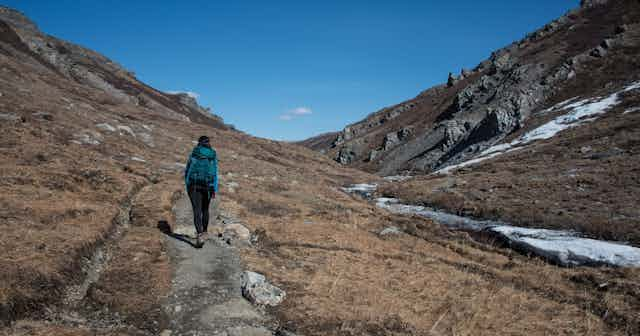

Spending time alone in nature is good for your mental and emotional health
Professor of Outdoor Education, Montreat College
Associate Professor and Program Director of Parks and Recreation Management, Western Carolina University
Associate Professor of Outdoor Education, Montreat College
Disclosure statement
Brad Daniel is Executive Director of 2nd Nature TREC LLC, which provides training, research, education and consulting to various outdoor-oriented organizations. He serves on the Board of the Environmental Educators of North Carolina (EENC), as Chair of the Leadership Team for the Southeastern Environmental Education Alliance (SEEA), and as Co-Chair of the Symposium on Experiential Education Research (SEER) for the Association for Experiential Education (AEE).
Andrew Bobilya is co-founder and director of training and education at 2nd Nature TREC LLC, which provides training, research, education and consulting to various outdoor-oriented organizations. He is Co-chair of the Symposium on Experiential Education Research (SEER) for the Association for Experiential Education (AEE).
Ken Kalisch does not work for, consult, own shares in or receive funding from any company or organization that would benefit from this article, and has disclosed no relevant affiliations beyond their academic appointment.
View all partners
Today Americans live in a world that thrives on being busy, productive and overscheduled. Further, they have developed the technological means to be constantly connected to others and to vast options for information and entertainment through social media. For many, smartphones demand their attention day and night with constant notifications.
As a result, naturally occurring periods of solitude and silence that were once commonplace have been squeezed out of their lives. Music, reality TV shows, YouTube, video games, tweeting and texting are displacing quiet and solitary spaces. Silence and solitude are increasingly viewed as “dead” or “unproductive” time, and being alone makes many Americans uncomfortable and anxious.
But while some equate solitude with loneliness, there is a big difference between being lonely and being alone. The latter is essential for mental health and effective leadership .
We study and teach outdoor education and related fields at several colleges and organizations in North Carolina, through and with other scholars at 2nd Nature TREC, LLC , a training, research, education and consulting firm. We became interested in the broader implications of alone time after studying intentionally designed solitude experiences during wilderness programs, such as those run by Outward Bound . Our findings reveal that time alone in nature is beneficial for many participants in a variety of ways, and is something they wish they had more of in their daily life.
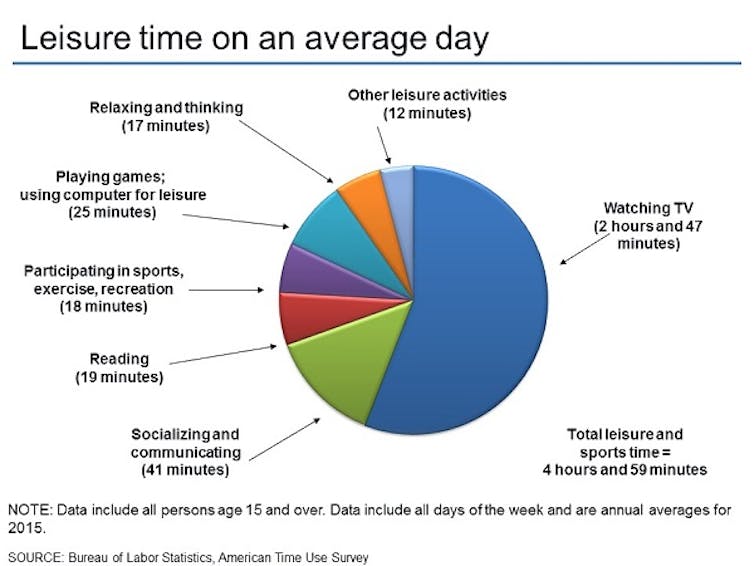
Reflection and challenge
We have conducted research for almost two decades on Outward Bound and undergraduate wilderness programs at Montreat College in North Carolina and Wheaton College in Illinois. For each program, we studied participants’ experiences using multiple methods, including written surveys, focus group interviews, one-on-one interviews and field notes. In some cases, we asked subjects years later to look back and reflect on how the programs had affected them. Among other questions, our research looked at participant perceptions of the value of solo time outdoors .
Our studies showed that people who took part in these programs benefited both from the outdoor settings and from the experience of being alone. These findings build on previous research that has clearly demonstrated the value of spending time in nature.
Scholars in fields including wilderness therapy and environmental psychology have shown that time outdoors benefits our lives in many ways. It has a therapeutic effect , relieves stress and restores attention . Alone time in nature can have a calming effect on the mind because it occurs in beautiful, natural and inspirational settings.
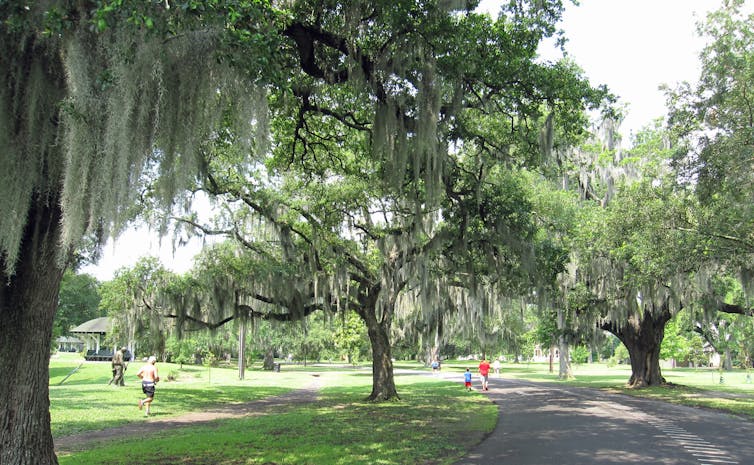
Nature also provides challenges that spur individuals to creative problem-solving and increased self-confidence. For example, some find that being alone in the outdoors, particularly at night, is a challenging situation. Mental, physical and emotional challenges in moderation encourage personal growth that is manifested in an increased comfort with one’s self in the absence of others.
Being alone also can have great value. It can allow issues to surface that people spend energy holding at bay, and offer an opportunity to clarify thoughts, hopes, dreams and desires. It provides time and space for people to step back, evaluate their lives and learn from their experiences. Spending time this way prepares them to re-engage with their community relationships and full work schedules.
Putting it together: The outdoor solo
Participants in programmed wilderness expeditions often experience a component known as “Solo,” a time of intentional solitude lasting approximately 24-72 hours. Extensive research has been conducted on solitude in the outdoors because many wilderness education programs have embraced the educational value of solitude and silence.
Solo often emerges as one of the most significant parts of wilderness programs, for a variety of reasons. Alone time creates a contrasting experience to normal living that enriches people mentally, physically and emotionally. As they examine themselves in relation to nature, others, and in some cases, God, people become more attuned to the important matters in their lives and in the world of which they are part.
Solitary reflection enhances recognition and appreciation of key personal relationships, encourages reorganization of life priorities , and increases appreciation for alone time, silence, and reflection. People learn lessons they want to transfer to their daily living , because they have had the opportunity to clarify, evaluate and redirect themselves by setting goals for the future.
For some participants, time alone outdoors provides opportunity to consider the spiritual and/or religious dimension of life. Reflective time, especially in nature, often enhances spiritual awareness and makes people feel closer to God. Further, it encourages their increased faith and trust in God . This often occurs through providing ample opportunities for prayer, meditation, fasting, Scripture-reading, journaling and reflection time.
Retreating to lead
As Thomas Carlyle has written, “In (solitary) silence, great things fashion themselves together.” Whether these escapes are called alone time, solitude or Solo, it seems clear that humans experience many benefits when they retreat from the “rat race” to a place apart and gather their thoughts in quietness.
In order to live and lead effectively, it is important to be intentional about taking the time for solitary reflection. Otherwise, gaps in schedules will always fill up, and even people with the best intentions may never fully realize the life-giving value of being alone.
- Spirituality
- Distraction
Want to write?
Write an article and join a growing community of more than 182,700 academics and researchers from 4,947 institutions.
Register now
Greater Good Science Center • Magazine • In Action • In Education
Mind & Body Articles & More
What happens when we reconnect with nature, research is discovering all the different ways that nature benefits our well-being, health, and relationships..
Humans have long intuited that being in nature is good for the mind and body. From indigenous adolescents completing rites of passage in the wild, to modern East Asian cultures taking “forest baths,” many have looked to nature as a place for healing and personal growth.
Why nature? No one knows for sure; but one hypothesis derived from evolutionary biologist E. O. Wilson’s “ biophilia ” theory suggests that there are evolutionary reasons people seek out nature experiences. We may have preferences to be in beautiful, natural spaces because they are resource-rich environments—ones that provide optimal food, shelter, and comfort. These evolutionary needs may explain why children are drawn to natural environments and why we prefer nature to be part of our architecture.
Now, a large body of research is documenting the positive impacts of nature on human flourishing—our social, psychological, and emotional life. Over 100 studies have shown that being in nature, living near nature, or even viewing nature in paintings and videos can have positive impacts on our brains, bodies, feelings, thought processes, and social interactions. In particular, viewing nature seems to be inherently rewarding, producing a cascade of position emotions and calming our nervous systems. These in turn help us to cultivate greater openness, creativity, connection, generosity, and resilience.

In other words, science suggests we may seek out nature not only for our physical survival, but because it’s good for our social and personal well-being.

How nature helps us feel good and do good
The naturalist John Muir once wrote about the Sierra Nevada Mountains of California: “We are now in the mountains and they are in us, kindling enthusiasm, making every nerve quiver, filling every pore and cell of us.” Clearly, he found nature’s awe-inspiring imagery a positive, emotive experience.
But what does the science say? Several studies have looked at how viewing awe-inspiring nature imagery in photos and videos impacts emotions and behavior. For example, in one study participants either viewed a few minutes of the inspiring documentary Planet Earth , a neutral video from a news program, or funny footage from Walk on the Wild Side . Watching a few minutes of Planet Earth led people to feel 46 percent more awe and 31 percent more gratitude than those in the other groups. This study and others like it tell us that even brief nature videos are a powerful way to feel awe , wonder, gratitude , and reverence—all positive emotions known to lead to increased well-being and physical health.
Positive emotions have beneficial effects upon social processes, too—like increasing trust, cooperation, and closeness with others. Since viewing nature appears to trigger positive emotions, it follows that nature likely has favorable effects on our social well-being.
This has been robustly confirmed in research on the benefits of living near green spaces. Most notably, the work of Frances Kuo and her colleagues finds that in poorer neighborhoods of Chicago people who live near green spaces—lawns, parks, trees—show reductions in ADHD symptoms and greater calm, as well as a stronger sense of connection to neighbors, more civility, and less violence in their neighborhoods. A later analysis confirmed that green spaces tend to have less crime.
Viewing nature in images and videos seems to shift our sense of self, diminishing the boundaries between self and others, which has implications for social interactions. In one study , participants who spent a minute looking up into a beautiful stand of eucalyptus trees reported feeling less entitled and self-important. Even simply viewing Planet Earth for five minutes led participants to report a greater sense that their concerns were insignificant and that they themselves were part of something larger compared with groups who had watched neutral or funny clips.
Need a dose of nature?
A version of this essay was produced in conjunction with the BBC's newly released Planet Earth II : an awe-inspiring tour of the world from the viewpoint of animals.
Several studies have also found that viewing nature in images or videos leads to greater “prosocial” tendencies—generosity, cooperation, and kindness. One illustrative study found that people who simply viewed 10 slides of really beautiful nature (as opposed to less beautiful nature) gave more money to a stranger in an economic game widely used to measure trust.
All of these findings raise the intriguing possibility that, by increasing positive emotions, experiencing nature even in brief doses leads to more kind and altruistic behavior.
How nature helps our health
Besides boosting happiness, positive emotion, and kindness, exposure to nature may also have physical and mental health benefits.
The benefits of nature on health and well-being have been well-documented in different European and Asian cultures. While Kuo’s evidence suggests a particular benefit for those from nature-deprived communities in the United States, the health and wellness benefits of immersion in nature seem to generalize across all different class and ethnic backgrounds.
Why is nature so healing? One possibility is that having access to nature—either by living near it or viewing it—reduces stress. In a study by Catharine Ward Thompson and her colleagues, the people who lived near larger areas of green space reported less stress and showed greater declines in cortisol levels over the course of the day.
In another study , participants who viewed a one-minute video of awesome nature rather than a video that made them feel happy reported feeling as though they had enough time “to get things done” and did not feel that “their lives were slipping away.” And studies have found that people who report feeling a good deal of awe and wonder and an awareness of the natural beauty around them actually show lower levels of a biomarker (IL-6) that could lead to a decreased likelihood of cardiovascular disease, depression, and autoimmune disease.
Though the research is less well-documented in this area than in some others, the results to date are promising. One early study by Roger Ulrich found that patients recovered faster from cardiovascular surgery when they had a view of nature out of a window, for example.
A more recent review of studies looking at different kinds of nature immersion—natural landscapes during a walk, views from a window, pictures and videos, and flora and fauna around residential or work environments—showed that nature experiences led to reduced stress, easier recovery from illness, better physical well-being in elderly people, and behavioral changes that improve mood and general well-being.
Why we need nature
All of these findings converge on one conclusion: Being close to nature or viewing nature improves our well-being. The question still remains…how?
There is no question that being in nature—or even viewing nature pictures—reduces the physiological symptoms of stress in our bodies. What this means is that we are less likely to be anxious and fearful in nature, and thereby we can be more open to other people and to creative patterns of thought.
Also, nature often induces awe, wonder, and reverence, all emotions known to have a variety of benefits, promoting everything from well-being and altruism to humility to health.
There is also some evidence that exposure to nature impacts the brain. Viewing natural beauty (in the form of landscape paintings and video, at least) activates specific reward circuits in the brain associated with dopamine release that give us a sense of purpose, joy, and energy to pursue our goals.
But, regrettably, people seem to be spending less time outdoors and less time immersed in nature than before. It is also clear that, in the past 30 years, people’s levels of stress and sense of “busyness” have risen dramatically. These converging forces have led environmental writer Richard Louv to coin the term “ nature deficit disorder ”—a form of suffering that comes from a sense of disconnection from nature and its powers.
Perhaps we should take note and try a course corrective. The 19th century philosopher Ralph Waldo Emerson once wrote about nature, “There I feel that nothing can befall me in life—no disgrace, no calamity (leaving me my eyes), which nature cannot repair.” The science speaks to Emerson’s intuition. It’s time to realize nature is more than just a material resource. It’s also a pathway to human health and happiness.
About the Authors

Kristophe Green
Uc berkeley.
Kristophe Green is a senior Psychology major at UC Berkeley. He is fascinated with the study of positive emotions and how they inform pro-social behavior such as empathy, altruism and compassion.

Dacher Keltner
Dacher Keltner, Ph.D. , is the founding director of the Greater Good Science Center and a professor of psychology at the University of California, Berkeley. He is the author of The Power Paradox: How We Gain and Lose Influence and Born to Be Good , and a co-editor of The Compassionate Instinct .
You May Also Enjoy

- How Nature Can Make You Kinder, Happier, and More Creative By Jill Suttie March 2, 2016
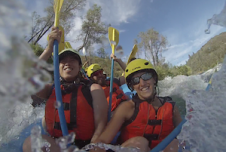
This article — and everything on this site — is funded by readers like you.
Become a subscribing member today. Help us continue to bring “the science of a meaningful life” to you and to millions around the globe.
/
Luisa Rivera for Yale Environment 360
Ecopsychology: How Immersion in Nature Benefits Your Health
A growing body of research points to the beneficial effects that exposure to the natural world has on health, reducing stress and promoting healing. Now, policymakers, employers, and healthcare providers are increasingly considering the human need for nature in how they plan and operate.
By Jim Robbins • January 9, 2020
How long does it take to get a dose of nature high enough to make people say they feel healthy and have a strong sense of well-being?
Precisely 120 minutes.
In a study of 20,000 people, a team led by Mathew White of the European Centre for Environment & Human Health at the University of Exeter, found that people who spent two hours a week in green spaces — local parks or other natural environments, either all at once or spaced over several visits — were substantially more likely to report good health and psychological well-being than those who don’t. Two hours was a hard boundary: The study, published last June, showed there were no benefits for people who didn’t meet that threshold.
The effects were robust, cutting across different occupations, ethnic groups, people from rich and poor areas, and people with chronic illnesses and disabilities.
“It’s well-known that getting outdoors in nature can be good for people’s health and well-being, but until now we’ve not been able to say how much is enough,” White said. “Two hours a week is hopefully a realistic target for many people, especially given that it can be spread over an entire week to get the benefit.”
The study by White and his colleagues is only the latest in a rapidly expanding area of research that finds nature has robust effects on people’s health — physically, mentally, and emotionally.
The studies “point in one direction: Nature is not only nice to have, but it’s a have-to-have for physical health and cognitive function.”
“When I wrote Last Child in the Woods in 2005, this wasn’t a hot topic,” said Richard Louv, a journalist in San Diego whose book is largely credited with triggering this movement and who coined the term Nature Deficit Disorder. “This subject was virtually ignored by the academic world. I could find 60 studies that were good studies. Now it’s approaching and about to pass 1,000 studies, and they point in one direction: Nature is not only nice to have, but it’s a have-to-have for physical health and cognitive functioning.”
These studies have shown that time in nature — as long as people feel safe — is an antidote for stress: It can lower blood pressure and stress hormone levels, reduce nervous system arousal, enhance immune system function, increase self-esteem, reduce anxiety, and improve mood. Attention Deficit Disorder and aggression lessen in natural environments, which also help speed the rate of healing. In a recent study , psychiatric unit researchers found that being in nature reduced feelings of isolation, promoted calm, and lifted mood among patients.
The growing body of research — combined with an intuitive understanding that nature is vital and increased concerns about the exploding use of smart phones and other forms of technology — has led to tipping point at which health experts, researchers, and government officials are now proposing widespread changes aimed at bringing nature into people’s everyday lives.
For example, researchers and policymakers now talk about “park deserts” in urban areas. Cities are adding or enhancing parks, and schools and other institutions are being designed with large windows and access to trees and green space — or blue space, as in aquatic environments. Businesses are increasingly aware of the desire among employees for access to green spaces. “It’s needed to attract a skilled work force,” said Florence Williams, author of The Nature Fix . “Young people are demanding high-quality outdoor experiences.”
A park ranger leads a hike through the Kahuku unit of Hawaiʻi Volcanoes National Park. NPS Photo/ Janice Wei
The number of “forest schools” — which have long been a tradition in Scandinavia and where much of the learning takes place in natural settings in the outdoors — has mushroomed in the United States, up by 500 percent since 2012, according to Louv. Oregon recently passed a ballot measure to raise money for outdoor schools, and the state of Washington just became the first state to license outdoor preschools, where much of the play and learning occurs outside.
The organization Children & Nature Network , founded by Louv and others, advocates for more time in nature for children, tracks the research, and has a long list of abstracts that summarize studies on the subject on its website.
And The Trust for Public Lands (TPL) has just finished a seven-year project to map the parks of the U.S., with the aim of identifying places in need of parkland. “We’ve mapped 14,000 communities, 86 percent of the nation, and looked at who does and doesn’t live within a 10-minute walk of a park,” said Adrian Benepe, a senior vice president of TPL. The organization has a Ten Minute Walk campaign to work with mayors across the U.S. to make sure all people have that kind of access.
An increasing number of healthcare providers are also embracing the back-to-nature paradigm. One organization, Park RX America , founded by Robert Zarr of Unity Healthcare in Washington, D.C., declares its mission “to decrease the burden of chronic disease, increase health and happiness, and foster environmental stewardship, by virtue of prescribing Nature during the routine delivery of healthcare by a diverse group of health care professionals.” The organization has 10,000 parks in its “prescribing platform.”
One expert says he’s concerned that the growing interest in more contact with nature relies too much on only experiencing it visually.
The global Association of Nature and Forest Therapy Guides shows clients how to use immersion in nature for healing. “The forest is the therapist,” the group’s slogan reads. “The guides open the door.”
Studies show that the effects of nature may go deeper than providing a sense of well-being, helping to reduce crime and aggression. A 2015 study of 2,000 people in the United Kingdom found that more exposure to nature translated into more community cohesion and substantially lower crime rates.
And while more vegetation is thought to encourage crime by providing security for criminals, another study found the opposite — vegetation abundance is associated with a reduction in assault, robbery, and burglary, although not theft.
Still, many of these studies are correlational rather than causal. That means it’s hard to show that natural landscapes cause these effects, though these things happen when people are in a natural environment.
Sara L. Warber, professor of family medicine at the University of Michigan, noted that there are no “randomized, controlled studies” on the effects of nature on human health. Nonetheless, she said, there are epidemiological studies and measurements of before and after exposure to nature, and the results from this research are robust.
The view from atop Swiftcurrent Mountain in Montana. Brendan T Lynch/ Flickr
Peter H. Kahn, a professor of psychology at the University of Washington who has worked on these issues for decades, is encouraged by the new focus on the subject but concerned that the growing interest in more contact with nature relies too much on only experiencing it visually. “That’s important, but an impoverished view of what it means to interact with the natural world,” he said. “We need to deepen the forms of interaction with nature and make it more immersive.”
What are the active ingredients in a dose of nature? Pioneers in this work, Rachel and Stephen Kaplan, who began studying the subject in the 1970s, devised Attention Restoration Theory, which holds that paying attention in bustling cities, at work, or in other stressful environments requires a good deal of effortful attention. In a natural environment, however, the Kaplans found that people paid attention more broadly and in a less effortful way, which leads to far more relaxed body and mind.
Japanese researchers have studied “forest bathing” — a poetic name for walking in the woods. They suspect aerosols from the forests, inhaled during a walk, are behind elevated levels of Natural Killer or NK cells in the immune system, which fight tumors and infections. A subsequent study, in which essential oils from cedars were emitted in a hotel room where people slept, also caused a significant spike in NK cells.
However this growing field might be defined, it is gaining momentum. In a recent paper , 26 authors laid out a framework to create a formal role for the positive impacts nature has on mental health and to formulate a model for conserving nature in cities and integrating it into planning for these health effects.
“There is an awakening underway today to many of the values of nature and the risks and costs of its loss,” says one researcher.
“We have entered the urban century, with two-thirds of humanity projected to be living in cities by 2050,” said Gretchen Daily, director of the Natural Capital Project at Stanford University and a senior author of a recent paper arguing that the cognitive and emotional benefits of nature should be factored into economic ecosystem service models. “There is an awakening underway today to many of the values of nature and the risks and costs of its loss. This new work can help inform investments in livability and sustainability of the world’s cities.”
While the research has grown leaps and bounds, Kahn and others argue in a recent review paper that research into the topic is still lacking in many ways, and they lay out a research agenda they say would help formalize the role of nature in public health policy.
Understanding nature’s therapeutic effects may be arriving at a propitious moment. Some studies have found that anxiety over climate change is a growing phenomenon. Ironically, one of the best antidotes for that might be a dose of green space.
“If I am feeling depressed and anxious and worried about the environment,” Warber said, “then one of the best things I can do is go out in nature.”
Related Articles
Scientists are trying to coax the ocean to absorb more co2.
By Andrew S. Lewis
Solomon Islands Tribes Sell Carbon Credits, Not Their Trees
By Jo Chandler
As Carbon Air Capture Ramps Up, Major Hurdles Remain
By Nicola Jones
More From E360
Will new leader end progress in saving indonesia’s forests, dire straits: can a fishing ban save the elusive european eel, marina silva on brazil’s fight to turn the tide on deforestation, with sea turtles in peril, a call for new strategies to save them, jared kushner has big plans for delta of europe’s last wild river, a nuclear power revival is sparking a surge in uranium mining, despite official vote, the evidence of the anthropocene is clear, at 11,500 feet, a ‘climate fast’ to save the melting himalaya, octopuses are highly intelligent. should they be farmed for food, nations are undercounting emissions, putting un goals at risk.
The Healing Power of Nature

I t sounded more like a lark than a scientific study when a handful of Japanese researchers set out to discover whether something special–and clinically therapeutic–happens when people spend time in nature. They were inspired by a new recommendation from the Forest Agency of Japan, which in the early 1980s began advising people to take strolls in the woods for better health. The practice was called forest bathing, or shinrin-yoku, and it was believed to lower stress–but that hadn’t been proved. Since then, a large body of evidence has shown that spending time in nature is responsible for many measurable beneficial changes in the body.
In one early study, Yoshifumi Miyazaki, a forest-therapy expert and researcher at Chiba University in Japan, found that people who spent 40 minutes walking in a cedar forest had lower levels of the stress hormone cortisol, which is involved in blood pressure and immune-system function, compared with when they spent 40 minutes walking in a lab. “I was surprised,” Miyazaki recalls. “Spending time in the forest induces a state of physiologic relaxation.”
Another researcher, Dr. Qing Li, a professor at the Nippon Medical School in Tokyo, found that trees and plants emit aromatic compounds called phytoncides that, when inhaled, can spur healthy biological changes in a manner similar to aromatherapy, which has also been studied for its therapeutic benefits. In his studies, Li has shown that when people walk through or stay overnight in forests, they often exhibit changes in the blood that are associated with protection against cancer, better immunity and lower blood pressure.
Recent studies have also linked nature to symptom relief for health issues like heart disease, depression, cancer, anxiety and attention disorders.
“The quiet atmosphere, beautiful scenery, good smells and fresh, clean air in forests all contribute to the effects,” says Li.
1 IT CAN LOWER BLOOD PRESSURE
Spending time outside is good for the heart, research shows, and since high blood pressure costs the U.S. approximately $48.6 billion per year and affects 1 in 3 Americans, visiting green spaces may be a simple and affordable way to improve heart health. A large June 2016 study found that nearly 10% of people with high blood pressure could get their hypertension under control if they spent just 30 minutes or more in a park each week. “If everyone were to make time for nature, the savings on health care costs could be incredible,” says study author Danielle Shanahan, a research fellow at the University of Queensland in Australia.
The fresh air could be one factor, since air pollution has been linked to a higher risk for heart attacks, but since the study participants lived in cities (and therefore were also being exposed to air pollution), that likely isn’t the only driver. Scientists think stress reduction also plays a part. “Nature is undemanding,” says Shanahan. “It requires effortless attention to look at the leaves of a tree, unlike the constant emails at work or the chores at home.”
Trees’ natural fragrance may also play a role, as some studies have shown that phytoncides lower blood pressure by quelling the body’s fight-or-flight response, which stresses the body.
2 EXPOSURE TO IT CAN INCREASE AWE
Looking at a stunning waterfall or undulating countryside can do more than enrich your Instagram feed: it can also elicit feelings of awe that bring a number of health benefits. In a 2015 study, researcher Paul Piff of the University of California, Irvine, found that people who spent 60 seconds looking up at towering trees were more likely to report feeling awe, after which they were more likely to help a stranger than people who looked at an equally tall–but far less awe-inspiring–building.
“Experiences of awe attune people to things larger than themselves,” says Piff. “They cause individuals to feel less entitled, less selfish, and to behave in more generous and helping ways.” The benefits of awe are physical too: regularly experiencing moments of awe has been linked to lower levels of inflammatory compounds in the body.
Everyday interactions with nature can also benefit. An April 2016 study of 44 cities found that urban areas with more parks scored higher on measures of community well-being. That’s likely because parks give people opportunities to socialize and be active with their neighbors, which could improve health, the researchers say. People in cities with lots of green space were more likely to report having more energy, good health and a sense of purpose too.
3 IT PROMOTES CANCER-FIGHTING CELLS
An April 2016 study published in the journal Environmental Health Perspectives reported that women living in areas with a lot of vegetation had a 12% lower risk of death from all causes compared with people in the least green places. That could be thanks to cleaner air, but nature may also offer its own medicine. Li’s research at Nippon Medical School shows that when people walk through a forest, they inhale phytoncides that increase their number of natural killer (NK) cells–a type of white blood cell that supports the immune system and is associated with a lower risk of cancer. NK cells are also thought to have a role in combating infections and autoimmune disorders and tamping down inflammation, which contributes to a wide range of ailments, including heart disease and diabetes.
In a 2010 study, researchers found that people who took two long walks through forests on consecutive days increased their NK cells by 50% and the activity of these cells by 56%. Those activity levels remained 23% higher than usual for the month following the walks. In another study, Li and his co-authors found that infusing people’s hotel rooms with phytoncides had some of the same anti-cancer-cell effects as those seen among people walking through forests.
4 IT CAN HELP WITH DEPRESSION AND ANXIETY
Not surprisingly, urban dwellers are far more likely to have anxiety and mood disorders than people who live in rural areas. That’s the bad news, since about 80% of Americans live in cities. The good news is that a small 2015 study published in the Proceedings of the National Academy of Sciences found that people who walked for 90 minutes in a natural setting, such as a forest or a nature park, were less likely to ruminate–a hallmark of depression and anxiety–and had lower activity in an area of the brain linked to depression than people who walked in an urban area. “Accessible natural areas may be vital for mental health in our rapidly urbanizing world,” the study authors write.
The exact mechanism of how nature helps mood disorders is unclear, but researchers agree that at the very least, time in nature tends to lift spirits. “When you have a short blast of nature exposure, people’s moods go up,” says Ming Kuo, an environment and behavior scientist at the University of Illinois at Urbana-Champaign. Another possibility is that the air near moving water, forests and mountains contains high levels of negative ions, which are thought to potentially reduce depression symptoms, according to a study in Frontiers in Psychology.
5 IT MAY HELP WITH ADHD SYMPTOMS
Small studies in kids with attention-deficit/hyperactivity disorder (ADHD) have suggested that nature walks could be a potential natural treatment to improve attention. In one study, a team led by Kuo of the University of Illinois at Urbana-Champaign had kids with ADHD take three 20-minute walks, without their medication, in different locations: a park, a neighborhood and an urban area. When the researchers tested the children afterward, they found that after a park walk, the kids were able to concentrate substantially better than after a walk in the other settings. In a separate 2011 study, Kuo and her colleagues found that children who regularly played in outdoor areas had milder ADHD symptoms, according to their parents, than children who played indoors or in areas with less nature access. “Nature gives the part of the brain that’s used in effortful concentration a rest,” says Kuo. “If you spend time doing something mentally relaxing, you feel rejuvenated.”
People without ADHD symptoms can also improve their attention and concentration by interacting with nature, evidence suggests. One University of Michigan study found that people improved their short-term memory by 20% after a nature walk but had no changes after walking through city streets.
6 EVEN FAKE NATURE HAS BENEFITS
Before you start planning your escape to the countryside, consider this: “There is plenty of evidence that you will get a range of benefits even if all you can manage is putting a plant in your room or looking at trees through your window at home,” says the University of Queensland’s Shanahan.
Research shows that even if they’re artificial, the images, sounds and smells of nature can have positive health effects. Listening to nature sounds over headphones, for instance, has been shown to help people recover faster from stress–which might explain why so many spas employ nature sounds in their treatment rooms.
Several studies have also shown that having a window view can improve attention, reduce stress and even help people in hospitals heal after operations. One widely cited study of people recovering from abdominal surgery found that those with tree-lined views were released faster from the hospital, experienced fewer complications and required less pain medication than people whose rooms faced a brick wall.
More Must-Reads From TIME
- The 100 Most Influential People of 2024
- Coco Gauff Is Playing for Herself Now
- Scenes From Pro-Palestinian Encampments Across U.S. Universities
- 6 Compliments That Land Every Time
- If You're Dating Right Now , You're Brave: Column
- The AI That Could Heal a Divided Internet
- Fallout Is a Brilliant Model for the Future of Video Game Adaptations
- Want Weekly Recs on What to Watch, Read, and More? Sign Up for Worth Your Time
Contact us at [email protected]
Spend Time in Nature to Reduce Stress and Anxiety
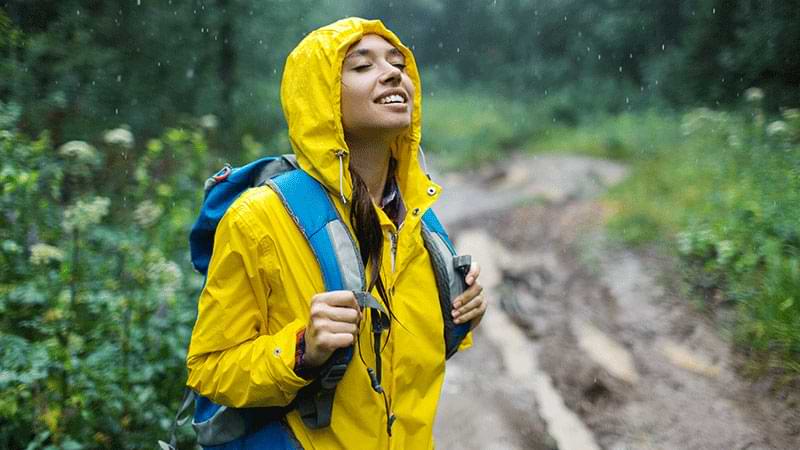
Keep outside in mind for less stress
Spending time in nature can help relieve stress and anxiety, improve your mood and boost feelings of happiness and well-being. Whatever you call it – forest bathing, ecotherapy, mindfulness in nature, green time or the wilderness cure ‒ humans evolved in the great outdoors, and your brain may benefit from a journey back to nature.
Feel better
Consider seeing a mental health professional if your symptoms are serious, but if you’re feeling a tinge of any of the blues listed above, try something such as:.
- Adding a daily walk on a local hiking trail to your regimen.
- Going on a bike ride around your neighborhood.

Join Healthy for Good™ and get our free Shop Smart, Eat Smart digital recipe booklet while supplies last!
See our editorial policies and staff .
Last Reviewed: Mar 21, 2024
Why some people spend more time in nature than others
February 7, 2023 – Why, where, and how people seek to spend time in nature has to do with where they live, their childhood experiences in the outdoors, and barriers to engaging with nature, according to Harvard T.H. Chan School of Public Health’s Linda Powers Tomasso .
Tomasso, a research fellow in the Department of Environmental Health , led a qualitative study published in September 2022 in PLOS ONE that explored how people form perceptions toward nature and how they engage with it. She wrote about the study in a February 1 article in Boston University’s Public Health Post.
Based on focus group discussions with 127 people from a range of backgrounds and neighborhoods across the U.S., Tomasso and her team found that participants’ engagement with nature was strongly influenced by where they grew up and by people and organizations who introduced them to the outdoors.
People who grew up or had childhood vacations near untamed nature, such as state or local parks, or who spent time at summer camp, had opportunities to participate in free exploration outdoors, which shaped a lifelong affinity for wilderness, the researchers found. Barriers to spending time in nature included busy work or study schedules, child-raising, or lack of motivation.
Those who faced the greatest barriers to engaging with nature included urban or low-income groups. Individuals in these groups were less likely to have spent time in nature at a young age or to have nature-inclined mentors. Among some urban individuals of color, barriers included feeling socially excluded or marginalized in green spaces, or feeling uncomfortable or unsure around nature given their lack of mentorship surrounding it. Tight finances, not owning a car, inefficient transit systems, sidewalk disrepair, and safety concerns also prevented some from spending more time outdoors.
Tomasso urged a focus on making nature more accessible for all. “Democratizing nature use will require attention to cultivating affinity for nature, as well as improving easy access to green spaces within cities and suburbs,” she wrote.
Read the Public Health Post article: Democratizing Nature Exposure for Better Health
Read the PLOS ONE study: Implications of disparities in social and built environment antecedents to adult nature engagement
Photo: iStock/CandyRetriever
- Search Please fill out this field.
- Manage Your Subscription
- Give a Gift Subscription
- Newsletters
- Sweepstakes
- Mind & Mood
- Emotional Health
The Benefits of Spending Time in Nature: Why You Should Get Outside More Often
All the healthy reasons you should head outdoors more often—and easy ways to make it a part of your daily routine.
Lindsay is a freelance travel and lifestyle journalist covering topics from love, marriage, fitness, wellness, psychology, and entrepreneurism.
:max_bytes(150000):strip_icc():format(webp)/lindsay-tigar-headshot-square-dc8c72f23a98495d84be607b877f83e0.jpg)
Evgeniia Siiankovskaia/Getty Images
There’s a reason why taking a big, deep breath of fresh air feels rejuvenating for the soul. Oxygen fills your lungs, sunlight hits your face, and your body relaxes. Nature has long been considered the ultimate healer, but we humans are spending less time outdoors in our modern, fast-paced, and ever-connected way of life.
Forgoing time in nature—or just time outside in general—is a missed opportunity to benefit your mental, emotional, and physical health, because spending time in Mother Nature can help relieve stress and anxiety; boost our immune system, creativity, and focus; and teach us to live more in the present.
Here, we spoke with mental health advocates and experts to better understand all the benefits of spending time and immersing yourself in the great outdoors—as well as strategic ways to get outside more often.
The Benefits of Spending Time In Nature
It provides time to recharge and destress..
Getty Images
Our bodies are great at adapting to changes and stress to help us push through challenging times, explains Ernesto Lira de la Rosa, PhD , licensed psychologist and media advisor for the Hope for Depression Research Foundation . While this flexibility is vital for survival, prolonged periods of high stress trains our bodies and minds to view stress as normal. The result: A state of stress becomes our baseline. How can we lower stress levels and give our systems a chance to come down from being on constant high alert? Go outside, de la Rosa says.
“When we spend time in nature, we can quite literally disconnect from the everyday stressors, technology, and social interactions,” he explains. “Nature can help us ground and recharge our bodies and minds, especially if we take time to observe our surroundings.”
A review published in Frontiers in Psychology in 2020 looked at 14 studies examining the effects of being in nature on young adults (15-to-30-year-olds), with the aim of identifying an ideal “dose” of nature to achieve its healthy effects. The studies included in the review showed that time spent in nature was associated with “statistically significant differences” in various stress markers, “including decreased heart rate, salivary cortisol, blood pressure, and sympathetic nervous system activity, and increased parasympathetic nervous system activity,” according to the study discussion. And the review found that, ultimately, exposure to natural spaces for even just 10 to 15 minutes was most beneficial to improve physiological markers like blood pressure and heart rate, as well as mood and concentration.
This is likely why when you picnic with friends and feel the breeze on your face, you feel more at ease than in a highly rated, super-busy restaurant. Or why reading a book outside while listening to a nearby fountain trickle feels more calming than turning a page on a busy train.
It supports physical health by encouraging exercise.
True: No matter where you exercise, increasing your heart rate is beneficial for your health. Also true: If you’re struggling to stick to an exercise routine, moving your workout outside could improve your motivation. A study published in the Journal of Epidemiology and Community Health found that people who spend time in nature or green spaces are more likely to engage in physical activity and have higher rates of keeping a healthy weight.
But you don’t need to sign up for an intense, burpee-filled outdoor bootcamp to reap the benefits. Engaging in physical activity outside— hiking , swimming, or simply walking — can lead to improved physical health, including lower blood pressure, reduced risk of heart disease, and improved immune function, explains Nicholette Leanza, a licensed professional clinical counselor for LifeStance Health .
It can boost creativity and concentration.
Leanza says research has also found that spending time in nature can increase creativity and improve focus. In a study published in the Journal of Environmental Psychology , researchers found that participants who spent time in nature were more creative and better problem solvers than those who spent more time in an urban environment.
Need more convincing that taking a break in nature can help you meet your looming deadline more effectively than forcing yourself to work? Leanza shares another study published in the Journal of Environmental Science and Technology , which found that people who walked in a park for 90 minutes had increased neural activity in the part of the brain associated with attention and positive affect.
It helps you live in the moment.
What’s longer: your ongoing to-do list that lives rent-free in your brain—or the hours you spend enjoying the sunshine? If you’re like most overworked Americans, it’s the former, but the latter is the goal. To help you release the anxiety caused by worrying about tomorrow’s stressors, going outside can encourage you to live right here and right now, according to psychologist Yvonne Thomas, PhD .
“Partaking in nature can help you appreciate where you are in that moment—and the environment around you,” she says. “In nature, you can easily practice mindfulness by taking in and being aware of life happening around you in real-time. This helps you to revel in nature's natural wonder and beauty, bringing you joy and inspiration.”
The next time a Zoom meeting sends you spiraling, leave your phone inside and go outside. Even if it’s your backyard or a small balcony. Look around and observe what you see—from the colors and the sounds to the smells. Savor them all and observe them, appreciating their details. You’ll quickly feel the stress roll off of your body.
How to Make Time for Nature
You know the benefits of making a date with Mother Nature daily—but actually RSVP-ing ‘yes’ and not flaking on outdoor time is another story. Rather than making grandiose commitments you know you won’t be able to meet, start small with these accessible habits to help you prioritize and enjoy more time outside.
Go outside first thing in the morning.
Depending on your life stage, you may have minimal moments for yourself throughout the day. And once everyone in the household is up and running—your self-care time is deprioritized. Rather than worrying if you can squeeze in outdoor time midday, start your morning with sunshine, recommends Gail Saltz, MD, a clinical associate professor at the New York Presbyterian Hospital Weill-Cornell School of Medicine and the host of the “ How Can I Help?” podcast.
“Sunlight also helps boost mood because of the mechanisms having to do with circadian rhythm,” Dr. Saltz says. And while you might not be thinking about going to bed while making your bed in the morning, those natural, a.m. rays make a difference in the quality of your rest, too: “Exposure to sunlight helps to set circadian rhythm which helps you to go to sleep at night for better sleep,” she says.
Make a (very doable) exploration bucket list.
It can be challenging to spend quality time in nature when we’re busy, and some weeks are more packed than others. Instead of holding yourself to an impossible daily or weekly ritual, de la Rosa recommends researching local parks, hiking trails, or scenic routes. Then when the opportunity arrives, you know where to head. “You don’t have to plan a day trip or a long weekend in nature; you can also take some time to appreciate the drive home or to work by taking a more scenic route if it’s available to you,” he says.
And when do you have extra time on the weekend? Consider choosing a more leisurely hike to test out and build up your endurance over time. The more you get outdoors—the more you’ll want to return.
Choose to walk whenever possible (and safe).
Driving does save time, but sometimes when we gain one thing, we sacrifice another, says Dr. Bethany Cook , PsyD, licensed clinical psychologist and health service psychologist. The ‘other’ in this case is our bodies' exposure to both easy movement and all the benefits of nature (or at the very least being outside and exposure to natural light). Simply walking where you need to be can improve your mood and give your lungs some outside air. “Tell your spouse you’ll walk to the party but would love a ride home. Need to mail letters? Walk to the post office instead of leaving them in your mailbox. And always take the ‘scenic route,’” Cook suggests.
Eat lunch or take meetings outside.
Those with office gigs may struggle the most to accept an invite outdoors. Meetings and projects require internet access—and it’s easy to get caught up in the monotonous nature of corporate work. Though it might not seem meaningful, Leanza says even a few minutes under the sky can brighten your mood and change the course of your day.
“You could take a walk during your lunch break or take your work outside and set up a makeshift office in a natural environment,” she shares. “These small changes can help you get outside and enjoy nature, even with a busy schedule.”
If you live in a zip code with frequent warm days, Cook suggests creating a mobile work station where you can drive to a nature park and work outside. “Preplanning and knowing what you need to make it happen ahead of time will increase the likelihood of you doing it more than once,” she says. “Plus, if you plan, you’re less likely to forget something that could derail the whole experience—like forgetting your hotspot device.”
Schedule time each season.
If you live somewhere with distinct seasons, de la Rosa says it can be wonderful to explore parks or areas outside where you can see the changing of the seasons. “This may mean seeing the fall leaves and all the colors that come with the change from summer to fall. It can also mean walking during the first few warm days of spring and seeing nature return to life,” he says.
Practice deep breathing exercises.
If you have access to outdoor space at home, de la Rosa recommends taking some time outside to practice breathing exercises. “Connecting with our breath is helpful for our bodies and minds, and we can enhance this experience by situating ourselves in an outdoor space,” he says. “As you inhale and exhale, you can appreciate the air around you, the smells, and sights in your area.”
Ask yourself: Could I do this outside?
Ultimately, the best way to prioritize getting outside and being in nature more often for all its positive, healthy benefits is to shift your mindset to put the great outdoors first. Even if you're not a big nature person (not everyone likes to camp, white-water raft, or rock climb—that's OK!), it can be as simple as looking at everyday activities and to-dos as opportunities to get outside, if and when it's easy to do. Ask the restaurant if they have a table outside in the garden. Get coffee with friends—but take your drinks to-go and stroll in the park for an hour. Do your daily meditation in the backyard or on the rooftop of your apartment building. Plan an easy hike at a local nature reserve. Get into gardening. The list is endless!
And for any days when you can't even squeeze in a walk around the block, you can always bring a little bit of nature indoors to you by adopting a few easy-to-care-for house plants .
Related Articles
Home — Essay Samples — Environment — Natural Environment — Benefits of Nature in Well-being
Benefits of Nature in Well-being
- Categories: Natural Environment
About this sample

Words: 2628 |
14 min read
Published: Dec 12, 2018
Words: 2628 | Pages: 6 | 14 min read
Works Cited
- Kaplan, S. (1995). The restorative benefits of nature: Toward an integrative framework. Journal of Environmental Psychology, 15(3), 169-182.
- Kuo, F. E., & Taylor, A. F. (2004). A potential natural treatment for attention-deficit/hyperactivity disorder: evidence from a national study. American Journal of Public Health, 94(9), 1580-1586.
- Mayer, F. S., Frantz, C. M., Bruehlman-Senecal, E., & Dolliver, K. (2008). Why is nature beneficial? The role of connectedness to nature. Environment and Behavior, 41(5), 607-643.
- Selhub, E. M., & Logan, A. C. (2012). Your brain on nature: The science of nature's influence on your health, happiness, and vitality. Wiley.
- Ulrich, R. S. (1984). View through a window may influence recovery from surgery. Science, 224(4647), 420-421.
- Ulrich, R. S., Simons, R. F., Losito, B. D., Fiorito, E., Miles, M. A., & Zelson, M. (1991). Stress recovery during exposure to natural and urban environments. Journal of Environmental Psychology, 11(3), 201-230.
- Wilson, E. O. (1984). Biophilia. Harvard University Press.
- World Health Organization. (2016). Urban green spaces and health: A review of evidence. World Health Organization. https://apps.who.int/iris/bitstream/handle/10665/204585/9789241565196_eng.pdf;jsessionid=86DEB82E1A0B29BB82B04B193D8C33FC?sequence=1
- Yoshifumi, M., & Miyazaki, Y. (2010). Effects of a forest environment on human natural killer (NK) activity and anti-cancer protein production. Acta Medica Nagasakiensia, 54(4), 63-70.
- Zeitzer, J. M., & Ruby, N. F. (2010). Why we nap: Evolution, chronobiology, and functions of polyphasic and ultrashort sleep. Springer.

Cite this Essay
Let us write you an essay from scratch
- 450+ experts on 30 subjects ready to help
- Custom essay delivered in as few as 3 hours
Get high-quality help

Prof Ernest (PhD)
Verified writer
- Expert in: Environment

+ 120 experts online
By clicking “Check Writers’ Offers”, you agree to our terms of service and privacy policy . We’ll occasionally send you promo and account related email
No need to pay just yet!
Related Essays
1 pages / 447 words
3 pages / 1381 words
1 pages / 526 words
2 pages / 942 words
Remember! This is just a sample.
You can get your custom paper by one of our expert writers.
121 writers online
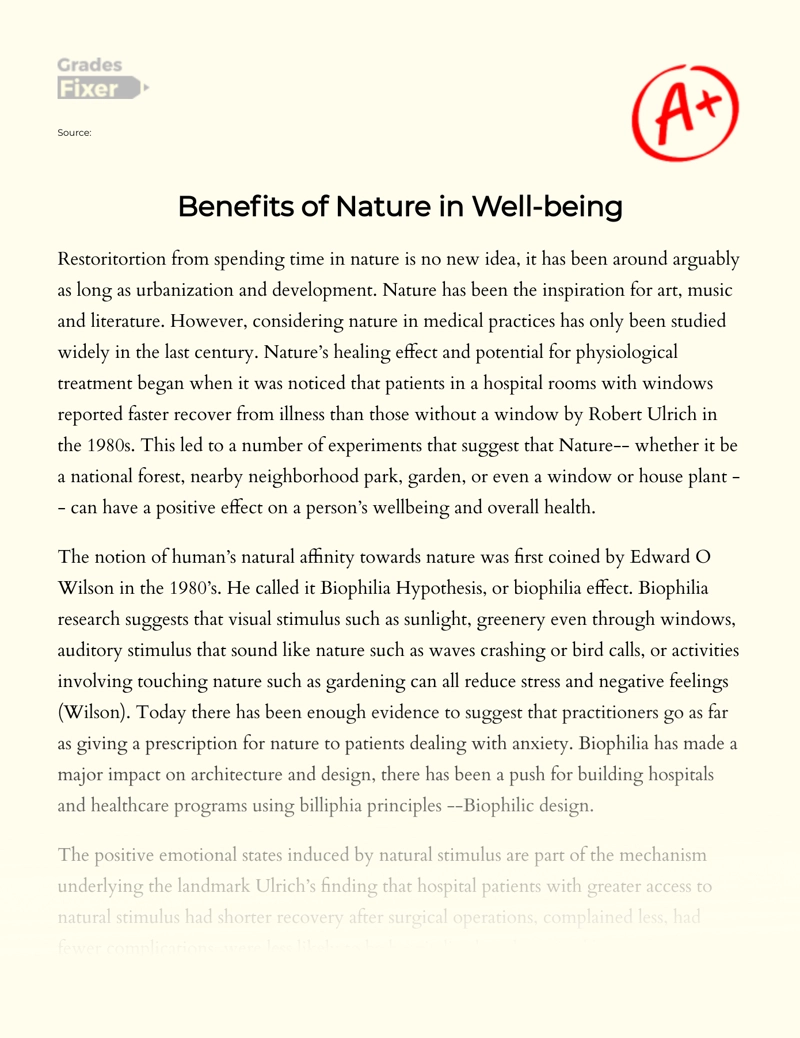
Still can’t find what you need?
Browse our vast selection of original essay samples, each expertly formatted and styled
Related Essays on Natural Environment
Environmental stewardship is a guiding principle that recognizes our collective responsibility to care for and protect the natural world that sustains us. In an era marked by environmental challenges such as climate change, [...]
In conclusion, environmental protection is critical for our planet's sustainability, human health, and the global economy. By prioritizing sustainable practices, collective responsibility, and comprehensive solutions, we can [...]
Capgemini Research Institute. (2020). Retail meets sustainability 2020. Retrieved from https://www.theguardian.com/society/2019/sep/26/global-depression-rates-rise-18-since-2005-who-says
The Valparaiso Moraine is a geological feature located in the Midwestern United States, specifically in the states of Indiana and Illinois. It is a significant landform that has played a crucial role in shaping the landscape of [...]
What is a cave? A cave is an underground hollow place large enough for a human to enter. The formation and development of caves are known as speleogenesis, which can occur over the course of millions of years. Caves are formed [...]
These regions range in size from just a few square meters to thousands of square kilometres. Scattered throughout the earth, several are remnants from the Pleistocene glaciation. Many ponds are seasonal, lasting just a couple of [...]
Related Topics
By clicking “Send”, you agree to our Terms of service and Privacy statement . We will occasionally send you account related emails.
Where do you want us to send this sample?
By clicking “Continue”, you agree to our terms of service and privacy policy.
Be careful. This essay is not unique
This essay was donated by a student and is likely to have been used and submitted before
Download this Sample
Free samples may contain mistakes and not unique parts
Sorry, we could not paraphrase this essay. Our professional writers can rewrite it and get you a unique paper.
Please check your inbox.
We can write you a custom essay that will follow your exact instructions and meet the deadlines. Let's fix your grades together!
Get Your Personalized Essay in 3 Hours or Less!
We use cookies to personalyze your web-site experience. By continuing we’ll assume you board with our cookie policy .
- Instructions Followed To The Letter
- Deadlines Met At Every Stage
- Unique And Plagiarism Free
Top navigation
- ELA Conference & Eco-Markeplace
- Season’s End Summit
- Regenerative & Resilient
- Ecological Plant Conference
- Login Instructions
- Member Profile

Advocating for Responsible Stewardship
Spending time in nature – the benefits are real.
by Donald A. Rakow
Belief in the benefits to humans of spending time in nature has precedents that stretch back thousands of years. In his On the Parts of Animals , Aristotle stated, “For in all natural things there is something marvelous.” And the transcendentalist writer, Ralph Waldo Emerson mused in his essay “Nature” that “the lover of nature is he whose inward and outward senses are still truly adjusted to each other; who has retained the spirit of infancy even into the era of manhood.”

There are many theories about why nature has such a positive series of effects on humans. Back in the nineties, Stephen and Rachel Kaplan advanced what they called the Attention Restoration Theory. They postulated that prolonged use of directed or voluntary attention, as demanded by most occupations and academic study, causes us to experience mental fatigue and associated irritability and stress. Spending even a brief period in the natural world promotes a sense of involuntary fascination that allows the brain’s directed attention to rest and recover from the rigors of problem solving.
Later, another researcher, Roger Ulrich, proposed the Stress Reduction Theory, which focuses on how our bodies respond to stressors and the ways in which these can be reversed after we’ve had a nature experience. A distinctly Japanese approach to the Stress-Reduction Theory is called forest bathing or Shinrin-yoku . Practitioners typically walk through an undisturbed forest while using all of their senses to bathe in the beauty of the nature around them. They emerge as more relaxed and focused individuals, ready to resume their hectic lives.
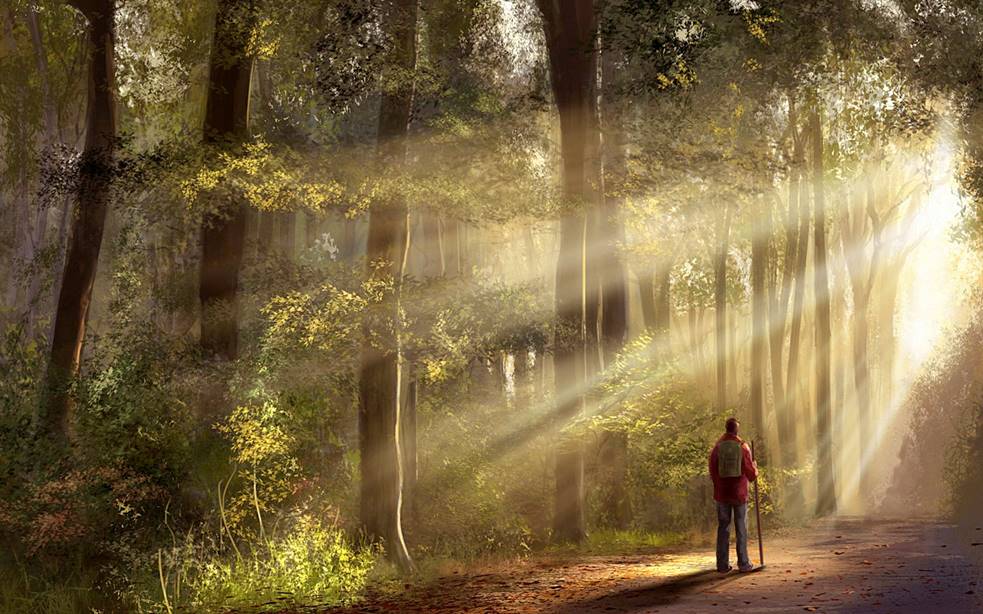
So, while few today would argue that time in nature is not beneficial, less research has been conducted on the types of natural settings that have the greatest impact and how long we have to spend in them to feel a change. Does an Olmstedian meadow have greater effect on us than a formalized parterre? Can ten minutes sitting in an urban mini-park bring relief from the rigors of crowded and noisy streets?
As we continue to remake our urban centers into biophilic cites and our approaches to landscaping move from heavily maintained formal designs toward more naturalistic and sustainable forms, additional research will be needed to examine how such landscapes affect our psychological and physical states. We can envision a time when a well-executed landscape will be appreciated as much for its health benefits as for its aesthetic appeal.

About the Author
Dr. Donald A. Rakow is an associate professor of horticulture at Cornell University and the former Executive Director of Cornell Plantations (now Cornell Botanic Gardens). He is the co-author of Public Garden Management (Wiley & Sons, 2011) and the upcoming books Public Gardens and Community Revitalization and Nature’s Healing Role: Addressing the Mental Health Crisis on American Campuses , both of which will be published by Cornell University Press in 2019. Dr. Rakow also directs the Nature Rx@Cornell program ( www.naturerx.cornell.edu ), whose goals are to encourage students to spend more time in nature to contribute to their mental and physical well-being. He is also active in a number of research projects, some of which he will share in this presentation at ELA’s 2018 Mid-Atlantic Conference .
Each author appearing herein retains original copyright. Right to reproduce or disseminate all material herein, including to Columbia University Library’s CAUSEWAY Project, is otherwise reserved by ELA. Please contact ELA for permission to reprint.
Mention of products is not intended to constitute endorsement. Opinions expressed in this newsletter article do not necessarily represent those of ELA’s directors, staff, or members.
bio diversity • conservation • lawn care • maintenance • meadows • rain gardens • pest management
Restoration • soil • trees • urban landscaping • water quality and recycling • wildlife habitats.
© 2024 Ecological Landscape Alliance. All Rights Reserved.

Cornell students get outside for some fresh air.
Spending time in nature reduces stress, research finds
By melanie greaver cordova.
New research from an interdisciplinary Cornell team has found that as little as 10 minutes in a natural setting can help college students feel happier and lessen the effects of both physical and mental stress.
The research, published Jan. 14 in Frontiers in Psychology , is part of a larger examination of “nature therapy” and aims to provide an easily-achievable dosage that physicians can prescribe as a preventive measure against high levels of stress, anxiety, depression and other mental health issues college students face.
“It doesn’t take much time for the positive benefits to kick in — we’re talking 10 minutes outside in a space with nature,” said lead author Gen Meredith , associate director of the Master of Public Health Program and lecturer at the College of Veterinary Medicine. “We firmly believe that every student, no matter what subject or how high their workload, has that much discretionary time each day, or at least a few times per week.”
Meredith and her co-authors reviewed studies that examined the effects of nature on people of college age (no younger than 15, no older than 30) to discover how much time students should be spending outside and what they should be doing while they’re there. They found that 10-50 minutes in natural spaces was the most effective to improve mood, focus and physiological markers like blood pressure and heart rate.
“It’s not that there’s a decline after 50 minutes, but rather that the physiological and self-reported psychological benefits tend to plateau after that,” said co-author Donald Rakow , associate professor in the School of Integrative Plant Science.
To enjoy the positive effects of being outside, students need only to be sitting or walking, the two primary activities the researchers examined in an effort to provide accessible recommendations.
“We wanted to keep this access to nature as simple and achievable as possible,” says Rakow. “While there is a lot of literature on longer outdoor programs, we wanted to quantify doses in minutes, not days.”
For Cornell students, there are a multitude of options for escaping into nature. For urban universities, research suggests that adding green elements to a built space can produce the same results. It is the time spent in nature, not necessarily nature itself, that’s beneficial.
“This is an opportunity to challenge our thinking around what nature can be,” says Meredith. “It is really all around us: trees, a planter with flowers, a grassy quad or a wooded area.”
The impetus for this work is a movement toward prescribing time in nature as a way to prevent or improve stress and anxiety, while also supporting physical and mental health outcomes. The researchers wanted to consider what “dose” would need to be prescribed to college-age students to show an effect. They are hoping that when it’s applied at universities, it becomes part of a student’s routine and is consumed in regular doses, like a pill.
“Prescribing a dose can legitimize the physician’s recommendation and give a tangible goal” says Meredith. “It’s different than just saying: ‘Go outside.’ There is something specific that a student can aim for.”
Meredith and Rakow’s co-authors include Erin Eldermire, head librarian at the Flower-Sprecher Veterinary Library; Cecelia Madsen ’12, M.P.H. ’19; Steven Shelley, M.P.H. ’19, epidemiologist at the Maine Center for Disease Control and Prevention; and Naomi Sachs, assistant professor at the University of Maryland.
For a longer version of this story, see the College of Veterinary Medicine website .
Melanie Greaver Cordova is managing editor at the College of Veterinary Medicine.
Media Contact
Gillian smith.
Get Cornell news delivered right to your inbox.
You might also like

Gallery Heading
Internet Explorer is no longer supported
Please upgrade to Microsoft Edge , Google Chrome , or Firefox .
Lo sentimos, la página que usted busca no se ha podido encontrar. Puede intentar su búsqueda de nuevo o visitar la lista de temas populares.
Get this as a PDF
Enter email to download and get news and resources in your inbox.
Share this on social
Why kids need to spend time in nature.
They may prefer to stick to their screens, but here's why getting outdoors matters
Writer: Danielle Cohen
What You'll Learn
- How much time do most kids spend inside?
- What are the benefits of being in nature?
These days, kids spend much more time inside, mostly thanks to technology. Spending time outdoors isn’t just enjoyable — it’s also necessary. Many researchers agree that kids who play outside are happier, better at paying attention and less anxious than kids who spend more time indoors.
Spending time in nature can build their confidence. There’s a lot less structure than most types of indoor play and they can choose how they interact with the nature around them. This gives them practice managing their own actions and encourages creativity and imagination.
Being outdoors can also teach them responsibility. For example, if they are in charge of watering a plant, they can learn that they must take care of living things to keep them alive.
Being outside gets kids moving, too. Regardless of what they’re doing, there’s usually more exercise involved than if they were sitting on the couch. Not only is exercise good for kids’ bodies, but it seems to make them more focused. This is especially helpful for kids with ADHD. Being outside also helps kids feel less stressed.
In the early 1980s, a Harvard University biologist named Edward O. Wilson proposed a theory called biophilia: that humans are instinctively drawn towards their natural surroundings. Many 21st century parents, however, would question this theory, as they watch their kids express a clear preference for sitting on a couch in front of a screen over playing outside.
The national panic about kids spending too much time indoors has become so extreme that the crisis has a name: Nature deficit disorder.
While calling it a disorder might be merely rhetorical, it’s clear kids spend significantly more time inside than outside. This shift is partly due to technology: Richard Louv, author of the book Last Child in the Woods: Saving Our Children From Nature-Deficit Disorder , tells the story of interviewing a child who told him that he liked playing indoors more than outdoors “’cause that’s where all the electrical outlets are.”
Increasing parental fears about diseases and dangers of playing outside—despite evidence to the contrary—are another big factor.
And as suburbs and exurbs continue to expand, nature is parceled off more, and kids seem less inclined to spend time in a fenced-in yard, let alone jump the fence into a neighbor’s or walk in the woods. Instead, indoor activities can seem easier (no sunscreen necessary!), safer, and even more sociable for kids who are growing up with multiplayer video games and social media accounts .
Why go outside?
Recent studies have exposed the benefit—even necessity—of spending time outdoors, both for kids and adults. Some argue that it can be any outdoor environment. Some claim it has to be a “green” environment—one with trees and leaves. Others still have shown that just a picture of greenery can benefit mental health. These nuances aside, most of the studies agree that kids who play outside are smarter, happier, more attentive, and less anxious than kids who spend more time indoors. While it’s unclear how exactly the cognitive functioning and mood improvements occur, there are a few things we do know about why nature is good for kids’ minds.
- It builds confidence . The way that kids play in nature has a lot less structure than most types of indoor play. There are infinite ways to interact with outdoor environments, from the backyard to the park to the local hiking trail or lake, and letting your child choose how he treats nature means he has the power to control his own actions.
- It promotes creativity and imagination. This unstructured style of play also allows kids to interact meaningfully with their surroundings. They can think more freely, design their own activities, and approach the world in inventive ways.
- It teaches responsibility. Living things die if mistreated or not taken care of properly, and entrusting a child to take care of the living parts of their environment means they’ll learn what happens when they forget to water a plant, or pull a flower out by its roots.
- It provides different stimulation. Nature may seem less stimulating than your son’s violent video game, but in reality, it activates more senses—you can see, hear, smell, and touch outdoor environments. “As the young spend less and less of their lives in natural surroundings, their senses narrow,” Louv warns, “and this reduces the richness of human experience.”
- It gets kids moving. Most ways of interacting with nature involve more exercise than sitting on the couch. Your kid doesn’t have to be joining the local soccer team or riding a bike through the park—even a walk will get her blood pumping. Not only is exercise good for kids’ bodies, but it seems to make them more focused, which is especially beneficial for kids with ADHD .
- It makes them think. Louv says that nature creates a unique sense of wonder for kids that no other environment can provide. The phenomena that occur naturally in backyards and parks everyday make kids ask questions about the earth and the life that it supports.
- It reduces stress and fatigue. According to the Attention Restoration Theory , urban environments require what’s called directed attention, which forces us to ignore distractions and exhausts our brains. In natural environments, we practice an effortless type of attention known as soft fascination that creates feelings of pleasure, not fatigue.
So while screen time is the easier, more popular choice, it’s important to set aside time for outdoor play. For fun, stimulating activities you and your kids can do in nature, see Ideas for Getting Your Kids into Nature .
Frequently Asked Questions
Learning about nature can be useful by teaching kids responsibility, as living things die if not properly taken care of. Entrusting a child with a living part of nature, such as a plant, allows them to see what happens if they forget to water it.
Kids should play outside because it builds confidence, promotes creativity, teaches responsibility, gets them moving, and reduces stress.
Was this article helpful?
Explore popular topics, subscribe to our newsletters.
" * " indicates required fields

Don’t Miss Out
Sign up for more articles and parenting tips direct to your inbox.
Spending More Time in Nature And Why It Is Important
Chloe Smith

Let us face the facts. We live in a world where we spend most of our time working or in the digital plane, browsing the internet, chatting, watching clips and movies, and so on. The older we get, it becomes increasingly rare for everyone to have the time to plan out a nice little trip outside the urban borders of the city, and actually spend quality time in nature. We sometimes even forget about the little pieces of greenery that we’ve got around us – parks.
Now, you are probably already aware of how spending time in nature is important for you in various ways. But, in case that it is simply no longer on your mind, and you have been neglecting all the amazing benefits, let us remind you, and hopefully drive you to plan a little trip in the near future.
Spending time in nature is great for your brain
For starters, spending time in a park, or even better, camping at a great spot outside the city, significantly impacts your brain . Simply being exposed to all of nature’s wonders stimulates the brain. Your prefrontal cortex which is responsible for your mind’s commands, can take a bit of a rest and revitalize.
Generally, spending a lot of time in natural surroundings makes people a lot more creative and productive once they return home. Your short-term memory improves, and your attention skills are boosted.
Nature heals your body
Just take into consideration what research has shown . Hospital patients, such as those who have had gallbladder surgery, recover much better and faster if they have a view of wonderful natural greenery from their windows, instead of just staring at brick walls. Taking a step further, and spending extended periods of time in forest bathing (which is known in Japan as shinrin-yoku) improves your heart rate, blood pressure, and cortisol levels.
There is also the fact that was proven by Korean scientists – when people are more exposed to images of urban scenes instead of natural ones, the blood flow to the amygdala is greater. As a result, the brain reacts a lot more by expressing anxiety and fear. On the other hand, when looking at the images of forests and various natural wonders, the people who participated in the research had shown that the blood flows much more into the anterior cingulate instead, which is connected to empathy and compassion.
Your immune system is boosted
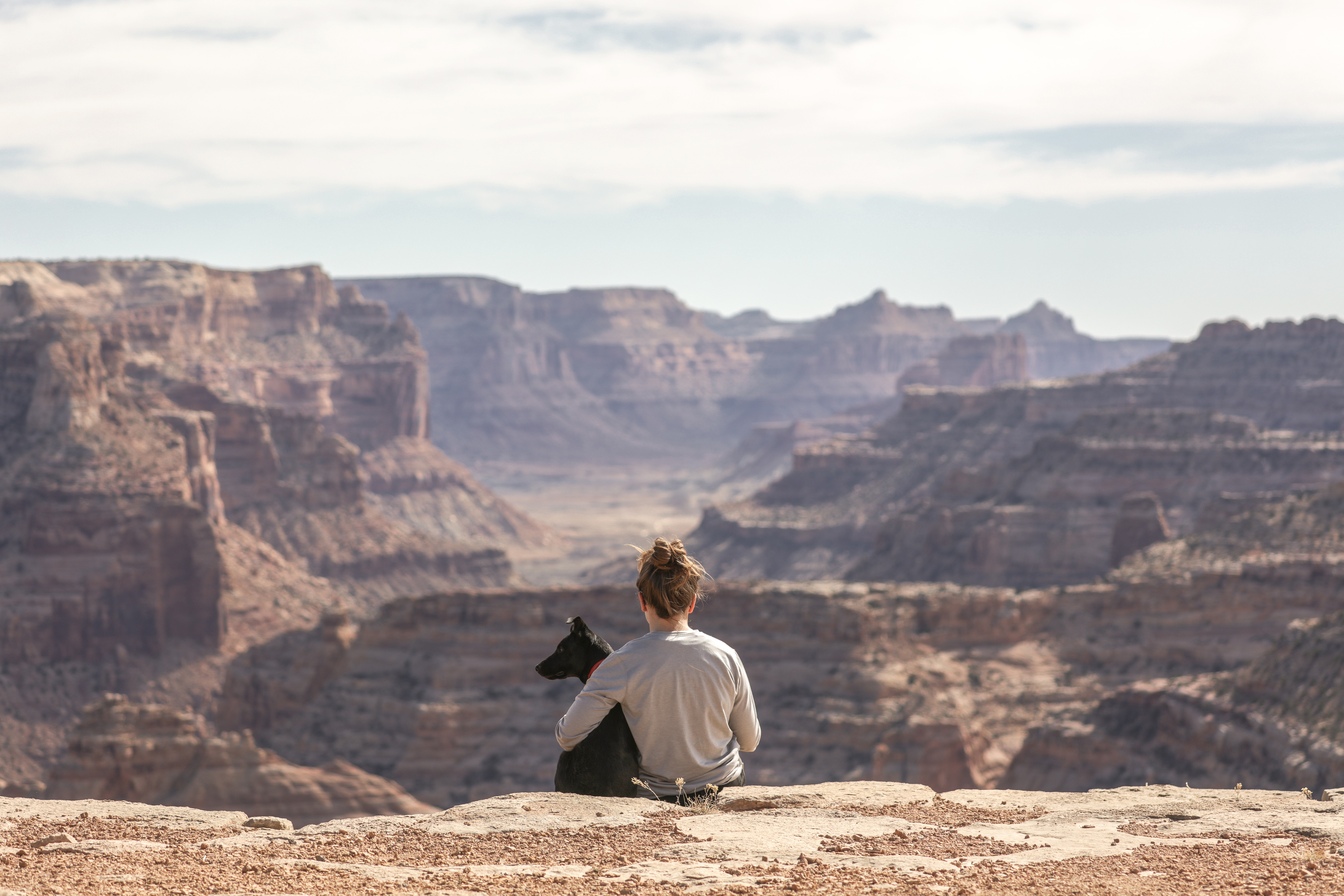
You should also know that spending time in nature boosts your immune system . What we are discussing here is the process of inflammation. It is pretty natural and happens when your body is open to various threats, like pathogens. The problem arises when inflammation goes too far, because this can result in various autoimmune diseases, and even, in the worst case scenario, cancer. When you spend time in nature, such risks are significantly decreased.
It is important to mention the effect of phytoncides (wood essential oils) . They are produced by plants and are airborne, so you get the chance to breathe a lot of them during your forest hikes, camping, and alike.
Camping is great in many ways
If you really have the time, dedicate a weekend to camping– somewhere where it is only going to be you, possibly your friends or family, and the wonders of nature. Next to all the previously mentioned benefits, there are also many others. For starters, you get to have some time off, so that you can have a bit of your own peace and quiet. You can choose the kind of view that you want to wake up to in the morning and really enjoy yourself.
Camping is also really good for sleeping. Your biological clock gets reset , and you can solve all your sleeping problems, like insomnia. A lot of it is related to the fact that, instead of artificial light which we spend time next to a lot. When camping, you get the chance to adapt to the natural cycle of light and dark and immerse yourself into the health effects of natural light. Of course, you still know that you shouldn’t spend too much time in the sun, right?
Finally, camping provides you with a great sense of freedom, and a chance for everyone to learn new things, especially if you have children who can greatly benefit from this experience. Just make sure that you bring the proper camping gear because you don’t want something to go awry.
In summation
Spending time in nature is important in some many ways. Now that we have reminded you about some of them, make a plan to dedicate some time to spend it outdoors, basking in the sunlight, natural beauties, and the health effects of being around plants for extended periods. Let nature heal your body, boost your immune system, and have some fun and educational time camping with your family or friends.
Home :: Spending Time in Nature
Spending Time in Nature
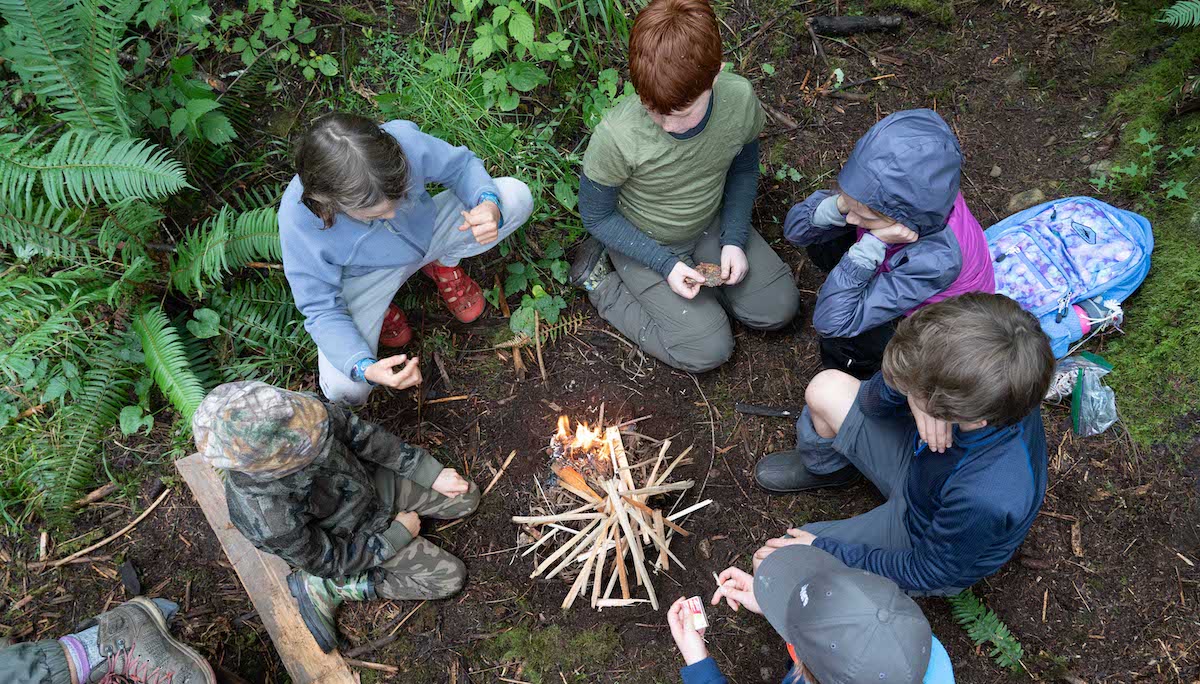
I believe in taking a deep breath of fresh forest air. I believe in feeling free as you romp through the trees. I believe in cooling your feet in a chilly mountain stream and letting your worries wash away with the current. I believe in spending time with nature.
My family has lived in a house in the woods since I was six years old. The UPS driver calls it the “back to beyond.” One of my favorite activities is to walk the surrounding wilderness with my dog, Neesha.
I remember once when I had a difficult math test coming up. I was very stressed. I decided to take Neesha outside. As I dashed down the trails, over logs, and around bends like a salmon swimming upstream, I felt the ferns whip past my legs and heard the birds chirping. It felt as if every step took me farther from my worries.
Since I was four, I have gone to Wilderness Awareness School every Thursday. There I learn about wilderness survival, primitive skills, animal tracking, and scouting. All of this is done outside a classroom. I often feel that this is my little slice of heaven, as it was there that I learned what true joy feels like. One time, we were on a backpacking trip to Umtanum Canyon and playing by a stream. Some people were singing, others were building a dam, and some were wrestling. As I plunked another rock onto the dam, I thought, “This is how humans were meant to be”.
Not being out in nature does not just mean you might be less happy, but can actually need to Nature Deficit Disorder (NDD). NDD refers to a hypothesis by Richard Louv from his 2005 book Last Child in the Woods . NDD isn’t a medical condition; it describes our separation from nature. “As one scientist put it, we can now assume that just as children need good nutrition and adequate sleep, they may very well we contact with nature” (Richard). Some effects of Nature Deficit Disorder include attention disorders and depression. Spending less time in nature can also cause lower grades in school and even obesity.
It seems like all the signs point towards spending time with nature, yet so many kids don’t. “Today’s children are spending an average of seven hours a day on entertainment media”. Another study said that “37% of children typically spend a half-hour or less being active outside. Few were outdoors for two hours or more on a typical day” (Norton). They don’t spend much time being as humans were meant to be, with nature.
From practical reasons, like NDD, to more personal ones like having fun with your dog or friends, I believe in spending time with nature. If we all spent more time with nature, we would be less stressed and more connected to whom we are. I’ll shut up now so you can go outside. Just put down your paper and walk out the door
Women need nature, and nature needs them!
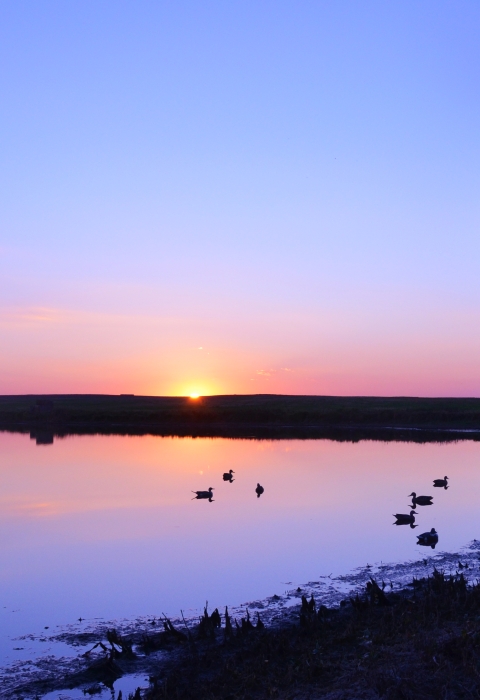
Tricia Andriski
How can women get comfortable spending time in nature? Through the Becoming an Outdoors Woman program. The U.S. Fish and Wildlife Service partners with state natural resource agencies to make it happen.
Hunting, fishing and the world of outdoor recreation isn’t for everyone , but with 77% of hunters identifying as male, outdoors women may feel theirs is a particularly solo journey. Learning a new activity can feel intimidating or even inaccessible, especially in male dominated activities where instructors may not understand special considerations for women related to instructional tips and safe, appropriate gear. The Becoming an Outdoors Woman (BOW) program takes aim at those challenges, helping women across the country learn to paddle, fish, hunt, shoot, forage and engage in other outdoor activities — together.
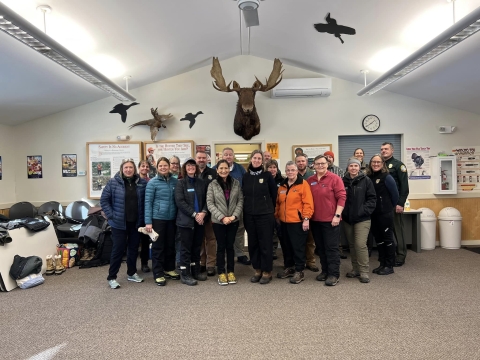
“Being outdoors and having a hands-on experience with nature is empowering,” says U.S. Fish and Wildlife Service Director Martha Williams, who recently participated in a program event in New Hampshire. “It’s inspiring that this program gives women the opportunity to build confidence and community while connecting with the outdoors in new and different ways.”
At the New Hampshire event, Secretary Haaland and Director Williams joined other women to experience learning opportunities available through the program. Neither had tried archery before, but with the help of instructors, they both enjoyed shooting a bow and arrow for the first time.
“Whether you are an established outdoor enthusiast or new to the outdoors, BOW provides many opportunities for women to connect with each other and with the natural world in new and different ways,” Williams said. “The Service is honored to support programming that teaches and empowers women as they pursue or advance their outdoor endeavors.”
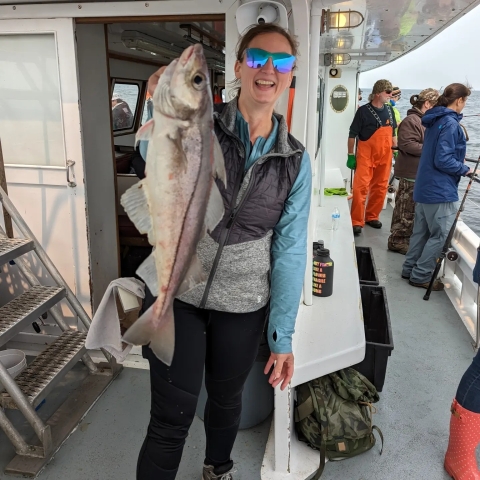
The program’s success is thanks to the network of dedicated BOW instructors and the many volunteers who devote their time to sharing their knowledge and love of the outdoors with others. In many states, BOW program courses and instructor time are further supported by funding from the Service’s Office of Conservation Investment (formerly Wildlife and Sport Fish Restoration program). The funds help offset costs, making BOW courses more affordable and allowing more people to participate.
Whether participants are aspiring or avid outdoor enthusiasts, BOW instructors across the country are guiding the way, enabling all participants to learn while taking part in fun, skill-building outdoor experiences. States follow a national model that divides BOW program offerings into thirds: one-third of the workshops focus on hunting, target shooting or wildlife management; another third on boating, paddling, fishing or water activities; and the remainder on nature-based outdoor recreation such as birdwatching, camping and outdoor cooking.
Each program has its own local flair, where participants learn skills specific to their area.
In Maryland, the Department of Natural Resources creates BOW events tailored to showcase the resources and opportunities available in the area, like goose hunting on the eastern shore and fishing on the Chesapeake Bay.
Texas Parks and Wildlife Department teaches bowfishing basics, since Texas waterways are often highlighted as some of the best bowfishing destinations in the U.S. for species such as gar, buffalo, mullet and sheepshead.
In Maine, one of the popular workshops helps participants become more self-reliant by teaching them to properly take care of game meat and prepare it for meals.
Some women enjoy BOW courses so much they choose to participate multiple times. Kaisha Morse, an administrative support assistant for the Service, enjoyed being a part of two BOW events prior to her employment with the agency, including a three-day course and a chartered fishing trip.
“I was able to take part in a fishing charter experience which was hands down one of my favorite days. The crew was over the top helpful and allowed participants to be as hands on or hands off as we were comfortable with. The icing on the cake was that I came home with plenty of fresh haddock to feed my family!” Morse said.
During both events, Morse was able to develop her relationship with the outdoors and build camaraderie with friends.

Women are incredibly important to the future of hunting, fishing and outdoor recreation. Thanks to Service funding, state agencies and their partners are welcoming more women to these activities with every BOW course and workshop. These women are increasing the number of people who are getting outside to enjoy outdoor activities, use our parks, appreciate conservation and manage wildlife populations.
“BOW is an exceptional program that provides all the tools and resources needed for women to grow their relationship with the outdoors to then pass on to the next generation of adventurers,” said Morse.
Recreational Activities
Latest stories.
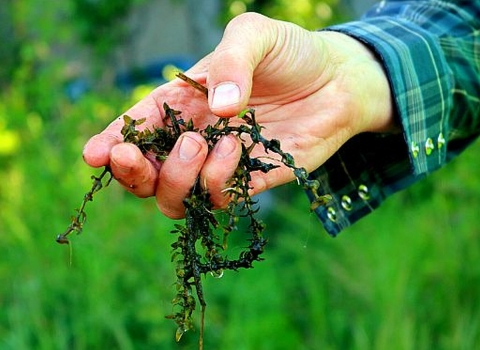
You are exiting the U.S. Fish and Wildlife Service website
You are being directed to
We do not guarantee that the websites we link to comply with Section 508 (Accessibility Requirements) of the Rehabilitation Act. Links also do not constitute endorsement, recommendation, or favoring by the U.S. Fish and Wildlife Service.
Importance Of Spending Time In Nature Essay
Most of us are aware that spending time in nature is good for us. Not so many, however, can say exactly why this is the case. Although understanding the exact reasons why the natural world can positively influence your general well-being isn’t going to increase the benefit, it might just inspire you to get out there and spend more time in our planet’s very own, natural quality-of- life -enhancer - nature itself. Below, we’ve listed five of these reasons in hope of doing just that… Exercise - The Planet’s Biggest, Open-Air Gym! Spending time in the outdoors and getting in some healthy exercise tend to go hand in hand. From a gentle walk in the woods to canoeing in a lake to hitting the trails in our national or state parks, the great outdoors …show more content…
We’re now working more and spending more time connected to ‘stressors’ such as phones, tablets and computers than ever before, and the corresponding increase in anxiety, stress and mental overload has meant that true relaxation is a luxury very few of us get to experience. Getting off the grid and leaving those emails and messages behind is almost a sure-fire way to help you unwind and truly take a breather. Doing so not only gives your brain time to ‘switch-off’ and normalize, but has been shown to significantly reduce cortisol levels and lower heart …show more content…
Our lifestyles are more sedentary than at any other time in human history and our diets richer, our portions bigger, and calories far more easily come by than was the case for our ancestors. As a result, our waistlines have ‘evolved’ correspondingly. Basically, we’re getting fat! As we all know, the consequences of weight gain are not merely aesthetic or visual, and piling on a few extra pounds can lead to far more serious health issues such as diabetes, heart disease and high blood pressure, not to mention the toll it can have on your self-esteem. While heading into the outdoors isn’t a guarantee of weight loss, when combined with a healthy diet it is a far more effective calorie-killer, we’re sure you’ll agree, than sitting on your ass and running the risk of succumbing to a dose of sitting disease
Natural Happiness By Paul Bloom Summary
There is this feeling we all experience when we step away from the chaos of rushing cars, infrastructure, and artificial lights, and we step into nature. Some describe it as bliss, comfort, excitement, pleasure or just pure happiness. This is the answer to the question Paul Bloom asks “Why should we care about nature?” in his article “Natural Happiness.” Paul goes through this process in which he uncovers the fact that “real natural habitats provide significant sources of pleasure for modern humans”, regardless of our need for food, clean water, and air. There are 3 main arguments that Paul makes in this article that I find particularly interesting, they include: “Our hunger for the natural is everywhere. In many regards our species has already kissed nature goodbye, and we are better off for it. There is a considerable mismatch between
The Benefits of Nature on Children in Richard Louv's Last Child in the Woods: Saving our Children from Nature Deficit-Disorder
Richard Louv, the author of, “Last Child in the Woods: Saving our children from nature deficit-disorder,” talks about nature and its benefits to a healthy development. Time Experiencing with nature allows people to have healthy development since it promotes creativity and imagination. It does not take more than a couple of steps outside to see nature. It is all around us. It can even be right outside our window. Leaving the blinds open can bring peace of mind, just by viewing it. As people experience time with nature, no matter the age, they develop greater creativity and imagination. It is like people today fear nature.
Persuasive Essay Exercise
Since the dawn of humanity, exercise has been crucial for physical survival. In recent times, however, exercise is losing its significance to human survival. Some would argue that it already has lost its significance, and as exercise becomes less important, people exercise less. According to fitness.gov, only 33% of adults receive the recommended amount of physical activity each week (citation). Clearly there is a problem. However, there is still a fraction of the population that exercises diligently. Why do these people stick with it? Exercise has countless advantages that are still extremely important to our lives. So even though the need of exercise may appear to be diminishing, the practical effects should be enough to encourage people
Butchart Garden in Victoria, Canada: A Place to Fall in Love With Nature
Everywhere we look, we are encircled by nature and its wonders. Nature comes in many different ways. It depends on us how we view nature. Everyone has their own opinion and reaction to nature. When we hear nature the first thing that comes to our mind is trees, flowers, mountains, waterfalls and many others. Flowers have their own significance which lightens up life. We all admire flowers and love their natural scent and colors. They make any occasion colorful. I went to Butchart Garden in Victoria, Canada and this is where I fell in love with nature.
The Environment: My Relationship With The Environment
When I think of the perfect place, I imagine a cascading waterfall, a vast forest, a stunning mountainside, or a warm sunset on the beach. I look up around me, mesmerized by the vastness of the natural world and breathe in the fresh air. Over the course of my life, I have come to respect the environment and the earth’s natural surroundings in ways that most others do not in the industrialized and technological era of today. I can appreciate the beauty of the Earth and of all the different landscapes and organisms that surround me. The way in which I value and treasure the environment has evolved just as I have. I see the environment as something to be preserved and admired, not destroyed or exploited. My relationship with the environment is
Urban Environment: A Restorative Environment
On the other hand, nature elements are proven to restore attentional fatigue and contribute both psychological and physiological benefits (Hartig et al., 2003; Ulrich & Simons, 1986; Ulrich et al., 1991). R. Kaplan and Kaplan (1989) proposed a restorative environment requires four features: being away, extent, fascination and compatibility to promote recovery from attentional fatigue. In natural environment, urban dwellers can obtain a sense of freedom from daily routine and projects that require massive mental efforts (being away). Nature usually has abundant and coherent landscape structures. It encompasses trails for exploration (extent), and many attractive elements, such as: animals, trees or plants, water features (fascination), and it
The Relationship Between Nature And Society
To understand the nature-society relationship means that humans must also understand the benefits as well as problems that arise within the formation of this relationship. Nature as an essence and natural limits are just two of the ways in which this relationship can be broken down in order to further get an understanding of the ways nature and society both shape one another. These concepts provide useful approaches in defining what nature is and how individuals perceive and treat
Ecosystem Services
The benefits that we get from the nature are ES and it is indispensable for our overall development and prosperity.
Cause And Effect Essay: Causes And Effects Of Exercise
It is understandable that friends, family and a social life exists and that also needs to be taking care of. Exercise reduces stress, improves your sleep and from it allows you to gain a social aspect consider as new friends. If exercised daily or even when there is time during the week it will improve and change your life allowing you to not fall asleep or be tired all the time. It will reduce stress by being distracted on productive activities like playing tennis, going hiking, running at the park or even walking around the neighborhood. This activities when applied are best rather than thinking about work all the time, even on days off, this activities will have a positive impact on depression, anxiety and help your body use oxygen more efficiently to improve breathing. As you pick up the pace, the body, like any engine, produces heat — and needs to cool off. The blood vessels in the skin dilate, increasing blood flow to the skin. The heat then dissipates through the skin into the air.
Physical Activity and its Impact on Lifestyles
There exists various lifestyles and behaviours, ranging from amount of nutrition intake, mental well-being, to the amount of physical activity engaged individually. Weighing the abundance of factors, this essay primarily aims to focus on the aspect of physical activity in relevance to how it possibly affects one's lifestyle. By cross-referencing to other lifestyles and behaviours, this essay will also demonstrate the importance of physical activity in possibly alleviating the issues raised pertaining to other lifestyles as well. Throughout this essay, there will be frequent references to the socio-ecological framework in examining the aforementioned factors.
Strength Training Essay
Even though stress isn’t always a major issue as everyone gets stressed out every once in a while, stress does have a long-term effect on peoples physical and mental health. In this study, 15 people completed a 6-week aerobic exercise program, another 15 people completed a weight training program the same amount of time and then there was a control group, who didn’t do any training program. This study shows that the 15 people who completed the aerobic program had the greatest reductions in stress and recovery in response to it. Most exercise is good for relieving stress of any kind but according to this study, aerobic exercise has the most
Nature In Robinson Crusoe: The Purpose Of Nature
No matter how much research is done, it is obviously known that humans will never be able to fully understand the phenomenon of the natural world, yet it is something that we still continue to explore and work with each and every day. As The Red Turtle simply explains to the viewer, nature is something that is full of chaos and unpredictability, yet it is beautiful in it’s own way and worth exploring. In today’s world of the twenty-first century, it is quite easy to see that humans are dominating the natural world. Mainly, I believe that nature is a big provider for our health and happiness, but in order to sustain this relationship, the human population must also provide for the natural world and keep the common peace.
Importance Of Science Essay
Science is about understanding and building knowledge about how the natural world works. It explains the inter-relationship with one's life and nature and promotes environmental education and more so environmental habits. Science teaches us as learners’ important skills such as reasoning, problem solving, analyzing, predicting, etc. It builds a foundation by providing a base in case a child does not go to higher level of education. Since science is all around us it is important to teach it so that the children could learn about themselves and their environment. Science also provides the knowledge needed to create new pieces of technology, which scientists used to develop civilization. For example, rather than writing
Essay On Outdoor Recreation
Outdoor recreation is something that everyone needs. Finding that place within yourself that allows you to forget about everything. Whether that be playing with your kids in the nearby park, fishing with your grandfather, hiking with someone or just by yourself you learn something new about yourself. Some people use recreation to forget about something and they use being outside as a calming effect. Williams and Stewart (1998) believe that nature, as a place, creates an emotion bond, has a complex meaning to the person, and that people have this draw back to the place. To get the same feeling that someone would get while doing an activity in nature to simulate Williams and Stewart’s (1998) belief, I recently participated in an
Environmentalism Essay
The natural conservancy is an organization that is out to conserve the lands and waters on which life depends on. In this paper, I will argue that the natural conservancy organization mission statement captures the true essence of environmentalism. The mission statement of the Nature Conservancy represents the true essence of environmentalism since it recognizes the intrinsic value of all living beings while prioritizing the importance of protecting nature for future generations.
More about Importance Of Spending Time In Nature Essay
Related topics.
Thank you for visiting nature.com. You are using a browser version with limited support for CSS. To obtain the best experience, we recommend you use a more up to date browser (or turn off compatibility mode in Internet Explorer). In the meantime, to ensure continued support, we are displaying the site without styles and JavaScript.
- View all journals
- Explore content
- About the journal
- Publish with us
- Sign up for alerts
- Journal Club
- Published: 29 April 2024
Pathogen genomics
Rapid pathogen surveillance: field-ready sequencing solutions
- Kirstyn Brunker ORCID: orcid.org/0000-0001-9990-6299 1
Nature Reviews Genetics ( 2024 ) Cite this article
Metrics details
- DNA sequencing
Genetic sequencing of pathogens has revolutionized the surveillance of infectious diseases, empowering scientists and health officials to anticipate and respond effectively to outbreaks. Despite their transformative potential, next-generation sequencing technologies have traditionally been inaccessible to many in the global scientific community, particularly in the Global South. This is primarily due to the prohibitively high capital costs and a widespread deficiency in laboratory infrastructure and genomics expertise. Ironically, it is in these regions where genomic surveillance could yield the most crucial insights, underscoring the urgent need for equitable access to such transformative technologies.
The emergence of portable sequencing capabilities, along with accompanying protocols, has substantially enhanced the feasibility of real-time outbreak response on a global scale. This advancement was highlighted by two complementary papers authored by a collaborative team from Brazil and the UK, which were released simultaneously in 2017. Quick et al. introduced a cost-effective and user-friendly method to generate viral genomes using portable sequencing platforms, while Faria et al. demonstrated its direct application in a mobile genomics laboratory deployed during the Zika virus (ZIKV) outbreak in Brazil in 2016, highlighting the practical implications of their work.
This is a preview of subscription content, access via your institution
Access options
Access Nature and 54 other Nature Portfolio journals
Get Nature+, our best-value online-access subscription
$29.99 / 30 days
cancel any time
Subscribe to this journal
Receive 12 print issues and online access
$189.00 per year
only $15.75 per issue
Buy this article
- Purchase on Springer Link
- Instant access to full article PDF
Prices may be subject to local taxes which are calculated during checkout
Original articles
Quick, J. et al. Multiplex PCR method for MinION and Illumina sequencing of Zika and other virus genomes directly from clinical samples. Nat. Protoc. 12 , 1261–1276 (2017)
Article CAS PubMed PubMed Central Google Scholar
Faria, N. R. et al. Establishment and cryptic transmission of Zika virus in Brazil and the Americas. Nature 546 , 406–410 (2017)
Download references
Author information
Authors and affiliations.
School of Biodiversity, One Health & Veterinary Medicine, University of Glasgow, Glasgow, UK
Kirstyn Brunker
You can also search for this author in PubMed Google Scholar
Corresponding author
Correspondence to Kirstyn Brunker .
Ethics declarations
Competing interests.
The author declares no competing interests.
Rights and permissions
Reprints and permissions
About this article
Cite this article.
Brunker, K. Rapid pathogen surveillance: field-ready sequencing solutions. Nat Rev Genet (2024). https://doi.org/10.1038/s41576-024-00734-w
Download citation
Published : 29 April 2024
DOI : https://doi.org/10.1038/s41576-024-00734-w
Share this article
Anyone you share the following link with will be able to read this content:
Sorry, a shareable link is not currently available for this article.
Provided by the Springer Nature SharedIt content-sharing initiative
Quick links
- Explore articles by subject
- Guide to authors
- Editorial policies
Sign up for the Nature Briefing: Microbiology newsletter — what matters in microbiology research, free to your inbox weekly.

COMMENTS
Health Effects of Spending Time Outdoor: Essay Body. Many people like serenity of spending leisure free time in nature so that they can reduce or eliminate the stress and fatigue of engaging in day-to-day activities. The natural scenery and fresh air outside have the positive effects for both adults and the kids.
Spending time in nature can act as a balm for our busy brains. Both correlational and experimental research have shown that interacting with nature has cognitive benefits—a topic University of Chicago psychologist Marc Berman, PhD, and his student Kathryn Schertz explored in a 2019 review. They reported, for instance, that green spaces near ...
Here are some of the ways that science is showing how being in nature affects our brains and bodies. Peter Morgan, Auyuittuq National Park. 1. Being in nature decreases stress. It's clear that hiking—and any physical activity—can reduce stress and anxiety. But, there's something about being in nature that may augment those impacts.
It has a , and . Alone time in nature can have a calming effect on the mind because it occurs in beautiful, natural and inspirational settings. Spending time in city parks like Audubon Park in New ...
Psychologist Richardo Correia, at the University of Turku in Finland, found that being in nature may change how we experience time and, perhaps, even give us the sense of time abundance. Correia examined research which compared people's experiences of time when they performed different types of tasks in urban and natural environments.
January 2, 2024—Spending time outdoors in green spaces has been linked with myriad physical and mental health benefits, including lower mortality, according to Harvard T.H. Chan School of Public Health's Heather Eliassen.. Eliassen, professor of nutrition and epidemiology, was among the experts quoted in a December 14 Pop Sugar article about the health impacts of nature and being outside.
There is also some evidence that exposure to nature impacts the brain. Viewing natural beauty (in the form of landscape paintings and video, at least) activates specific reward circuits in the brain associated with dopamine release that give us a sense of purpose, joy, and energy to pursue our goals. But, regrettably, people seem to be spending ...
The global Association of Nature and Forest Therapy Guides shows clients how to use immersion in nature for healing. "The forest is the therapist," the group's slogan reads. "The guides open the door.". Studies show that the effects of nature may go deeper than providing a sense of well-being, helping to reduce crime and aggression.
1 IT CAN LOWER BLOOD PRESSURE. Spending time outside is good for the heart, research shows, and since high blood pressure costs the U.S. approximately $48.6 billion per year and affects 1 in 3 ...
Keep outside in mind for less stress. Spending time in nature can help relieve stress and anxiety, improve your mood, and boost feelings of happiness and wellbeing. Whatever you call it - forest bathing, ecotherapy, mindfulness in nature, green time or the wilderness cure -- humans evolved in the great outdoors, and your brain benefits from a journey back to nature.
February 7, 2023 - Why, where, and how people seek to spend time in nature has to do with where they live, their childhood experiences in the outdoors, and barriers to engaging with nature, according to Harvard T.H. Chan School of Public Health's Linda Powers Tomasso.. Tomasso, a research fellow in the Department of Environmental Health, led a qualitative study published in September 2022 ...
Forgoing time in nature—or just time outside in general—is a missed opportunity to benefit your mental, emotional, and physical health, because spending time in Mother Nature can help relieve stress and anxiety; boost our immune system, creativity, and focus; and teach us to live more in the present. Here, we spoke with mental health ...
Spending time in nature also improves mood and restores some of the decreases in cognitive abilities that accompany chronic stress. In sum, there are many psychological, emotional, cognitive, physiological, and behavioral benefits of spending time in nature.
by Donald A. Rakow. Belief in the benefits to humans of spending time in nature has precedents that stretch back thousands of years. In his On the Parts of Animals, Aristotle stated, "For in all natural things there is something marvelous."And the transcendentalist writer, Ralph Waldo Emerson mused in his essay "Nature" that "the lover of nature is he whose inward and outward senses ...
Spending time in nature reduces stress, research finds. New research from an interdisciplinary Cornell team has found that as little as 10 minutes in a natural setting can help college students feel happier and lessen the effects of both physical and mental stress. The research, published Jan. 14 in Frontiers in Psychology, is part of a larger ...
Models using duration categories. Descriptive data on the relationships between time spent in nature in the last 7 days (in 60 min categories) and self-reported health (Good vs. poor) and ...
Spending time outdoors isn't just enjoyable — it's also necessary. Many researchers agree that kids who play outside are happier, better at paying attention and less anxious than kids who spend more time indoors. Spending time in nature can build their confidence. There's a lot less structure than most types of indoor play and they can ...
Spending time in nature is great for your brain. For starters, spending time in a park, or even better, camping at a great spot outside the city, significantly impacts your brain. Simply being exposed to all of nature's wonders stimulates the brain. Your prefrontal cortex which is responsible for your mind's commands, can take a bit of a ...
The COVID-19 pandemic has disrupted our economy, social lives, and mental health, and it therefore provides a unique chance for researchers to examine how people cope with changes to their everyday activities. Research suggests that people may be spending more time in nature than they did pre-pandemic. The current study sheds light on how nature is being used to cope with the stresses of the ...
In the study, researchers asked 1,285 children in North Carolina, between the ages of 9 and 12, to answer a series of questions about their time in the outdoors. They wanted to know whether these kids spent time hunting, fishing, hiking, camping or playing sports outside, and how they felt about the natural world in general.
Spending less time in nature can also cause lower grades in school and even obesity. It seems like all the signs point towards spending time with nature, yet so many kids don't. "Today's children are spending an average of seven hours a day on entertainment media". Another study said that "37% of children typically spend a half-hour ...
How can women get comfortable spending time in nature? Through the Becoming an Outdoors Woman program. The U.S. Fish and Wildlife Service partners with state natural resource agencies to make it happen. Hunting, fishing and the world of outdoor recreation isn't for everyone , but with 77% of hunters identifying as male, outdoors women may ...
Importance Of Spending Time In Nature Essay. 1234 Words3 Pages. Most of us are aware that spending time in nature is good for us. Not so many, however, can say exactly why this is the case. Although understanding the exact reasons why the natural world can positively influence your general well-being isn't going to increase the benefit, it ...
Find breaking science news and analysis from the world's leading research journal.
Global projections of macroeconomic climate-change damages typically consider impacts from average annual and national temperatures over long time horizons1-6. Here we use recent empirical ...
In this Journal Club, Kirstyn Brunker highlights two papers published in 2017 that showcase how the emergence of portable sequencing capabilities improved the real-time response to infectious ...